Sep 16, 2024
- Environment
- Photo Essays
- Random Thoughts
- Our Heritage
- Architecture
- Spirituality
- Society & Lifestyle
- Perspective
- Creative Writings
- Book Reviews
- Individuality
- Literary Shelf
- Travelogues

The World Famous Valliyoor Murugan Temple
by Kalakad Ganapathy
How to reach Valliyoor
Valliyoor can be reached from Bangalore, Chennai, Madurai,Mumbai. Nearest Railway Stations are Tirunelveli Junction / Kovilpatti/ Vanchi Maniyachi. Tirunelveli is however the closest railway station. Valliyoor is a 1-hour drive from Tirunelveli. Nagercoil and Thiruvananthapuram are also located close to Valliyoor. Valliyoor has a railway station too. Some trains do halt at Valliyoor (like the Kanyakumari express). Bus facilities are aplenty to reach Valliyoor from Nagercoil / Tirunelveli. Donavur and Yerwadi are other tiny hamlets located close to Valliyoor where there is a predominant Muslim population.
The once tiny hamlet has grown exponentially over the last few years to become a town. It is famous for the Murugan temple. The population is a mix of Hindus, Muslims and Christians. The Tamil Brahmin community formed a sizeable part of the population in Valliyoor in the early 60’s and 70’s. Today, the percentage of Brahmins in Valliyoor is less than 1%. Valli is the consort of Lord Muruga and Oor in Tamil means village. So, Valliyoor = Valli + Oor ; the village of Valli. What is so special about Valliyoor
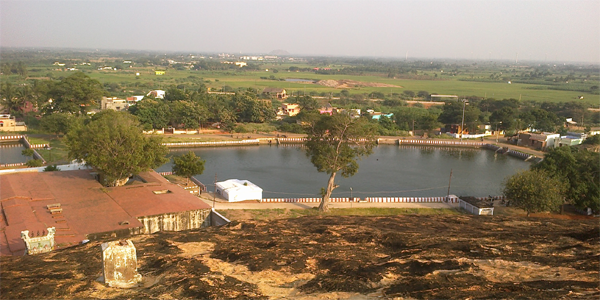
The breathtaking scenic beauty, the hills of Valliyoor, the temple of Lord Muruga (also called Lord Karthikeya) which is located in a cave under the hill. The temples of Muppandal Esakki Amman (a village deity that is very powerful) as well as Lord Sundara Venkatesa Perumal (Lord Balaji) are other well-known temples. In recent years, the Mutharamman temple has been re-constructed by way of suitable modifications. All these shrines are the pride of Valliyoor. More importantly, this writer was born in Valliyoor !
Mahendragiri Hill that finds mention in Sundara-Kandam is located to the west of Valliyoor. This was the hill where Sage Parasurama did severe penance. The Valliyoor lake is called as “Cheevalaperi lake”. Well known poet-saint Arunagirinathar has written about Valliyoor in Thirupukkazh”. Keezhakallur Mu.Azhvarapillai (1839-1925) has sung about Valliyoor in his verses. These verses were published by the temple authorities in the year 1942.
Village lore has it that Sage Agastya had cursed a merchant called Durlaban in Valliyoor when he refused to part with a few morsels of rice saying that he can’t give anything in charity, even if it was for Sage Agastya. The sage cursed that all the rice that couldn’t be of use to someone like him, be as well converted to stone. This is how the hills were formed. Between the years 1162-1173, Valliyoor was the capital of Pandiya Kings. It is located fairly close to Sri Lanka. Invasion of Muslim rulers around B C 1310 appears to have destroyed many valuable historical records. In the year 1955, electricity connection was given to the temple. Though Valliyoor is synonymous with Murugan temple, requests have been made for archaeological survey in the areas in and around Valliyoor. It is widely believed that Valliyoor palace and fort were destroyed by invaders.
Vallioor Temple – Matchless in its history, glory and splendour
In the entire Tirunelveli district, Valliyoor has the rare distinction of having the one and only cave temple of Lord Muruga. A rock named as Pooranagiri was excavated to build this temple. The temple shape is in the form of “Om”.
Lord Muruga stands in the sanctum sanctorum accompanied by his consorts Valli and Deivanai.
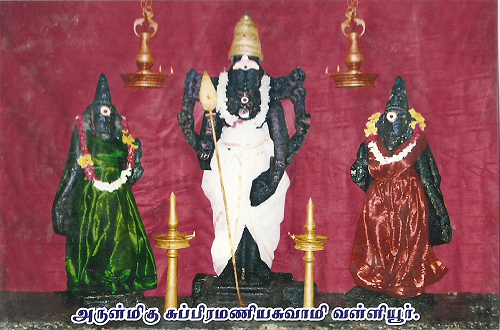
Please note that Lord Muruga has four arms and the idol is a replica of the one in Thiruchendur. On his right hand are flowers and his left hand is holding onto his thigh. Next to the sanctum sanctorum is located the artha mandapam and then the maha mandapam. In the artha mandapam, Lord Arumuga gives darshan along with Valli – Deivanai. To facilitate circumambulation of the artha mandapam, the hill has been drilled to set up a cave path till the sanctum sanctorum of Lord Shiva. In this temple, Lord Shiva is called as – Jayandeeswarar. The shiva ling faces the west in this temple which is considered very auspicious.
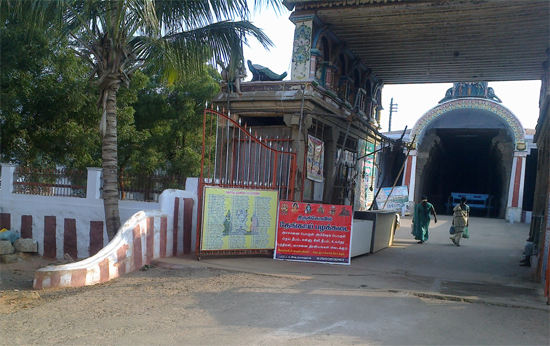
Bang opposite Lord Muruga is placed, the idol of peacock which is Lord Muruga’s vehicle ( vaganam ). The Artha mandapam also has the idols of Vinayaka, Veerabaghu and Veera mahendran. On the right side of the artha mandapam is a cave. Alongside the entrance of the cave are Vinayaka, sastha (ayyappa) and Lord Shiva. The Murugan temple has 13th century stone carvings. The temple also has a specific sanctum sanctorum dedicate to Valli – consort of Lord Muruga. The maha mandapam has kashi vishwanadhar, visalakshi and shani bhagwan. There is also Dakshinamurthy (Guru Bhagavan) idol in the temple.
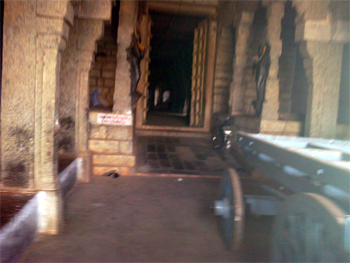
During festive occasions, the Valliyoor Murugan temple has its own charm and the entire village rallies around the temple to take part in the festivities. The temple history and other religious books are available in the temple itself. But all these are Tamil books. Photographs are available at a price of Rs.20/-. Rose water is available at the temple counter. All the pooja items are available at the temple entrance itself. Abhishekams are performed in the temple for Rs.2/-. If this does not make your heart melt, nothing else can.
People of Valliyoor are naive, almost child-like in their innocence. Unlike other places, you won’t find people in the temple hankering after money. Believe me, the cave temple is a rare visual feat which you must visit at least once.
Archaeological surveys in and around Valliyoor have discovered hidden Shiva temples in and around the Nambi river as well as a few sastha temples that were not maintained so well. Some of the idols that were found were supposedly 3000 years old.
Important days
Chitra Vishu (April 14), Chitra Pournami (May 6), Vasantham (Spring) festival, Adi Amavasya, Pongal, Makara Sankaranthi, Mahashivarathri. During the celebrated Karthik month, lamps are lighted in the adjoining hills. The popular soora-samhara festival is also celebrated with pomp in Valliyoor. Soora-samhara is an important event during which Lord Muruga decimates all his enemies. (Soora – evil, Samhara – Kill).
Pooja timings
5.30 – 6.00 am – Vishwaroopam
6.30 – 7.00 am – Udayamarthandam
7.30 – 8.00 am – Festival Pooja
8.30 – 9.00 am – Chirukalasanthi
11.00-11.30 am – Ucchikaal pooja
5.30 – 6.00 pm – Sayaaratchai pooja
8.00 – 8.30 pm – Arthachamam pooja
Every day at 7:30 am in the morning, abhishekams are performed for Lord Muruga. On special occasions like Sasthi, Lord Muruga and his consorts are decorated with flowers and clothes and a procession is taken in silver peacock vehicles.
Other details :
Archana – Rs.1.50
Coconut pooja – Rs.7.75
Rose water – Rs.2.00
Abhishekam – Rs.51.00
Kalabam – Rs.100
Kavadi – Rs.10
Paal Kudam – Rs.10
Every day, the temple hosts " annadana" (free meals) for about 100 people.
Valli – the beloved consort of Lord Muruga
Lord Muruga came to Valliyoor immediately after marrying Valli. References are indicated in the " Skandapuran" . Valli was so much in love with Lord Muruga that she refused to allow Deivanai in her domain. Deivanai was almost in tears and it was only Sage Agastya who consoled Deivanai and took her to Valli and explained to her that Deivanai be treated like her sister. As this place belonged to Valli who seems to have had a dominating nature, it is not surprising that women born in Valliyoor are said to be extremely demanding wives after their marriage. They are also extra sensitive. Not a surprise - because it appears Lord Muruga simply pampered Valli !
Temple Address
The Temple Executive Officer/ Peshkar,
Arulmigu Subramanya Swamy Temple,
Valliyoor – 627 117,
Radhapuram ,
Tirunelveli District.
Tel No : 04637-222888
Benefits of visiting Valliyoor
No one has ever returned empty-handed from the Valliyoor Murugan temple. Childless couples have visited Valliyoor, prayed and have come back to pay their respects after their wish was fulfilled by Lord Muruga. Valliyoor Murugan looks at you and says – “Yamirukka Bhayamen” (Why fear when I am here) and that sums up the power of this shrine which is located amidst picturesque Mahendragiri hills. Lord Muruga is someone who rushes to your rescue provided you remember him. So, what are you waiting for?
Where is Valliyoor
Valliyoor is a town in Tamil Nadu. Located on the Kashi-Kanyakumari highway, it is at 30 milestones from Tirunelveli and 60 kms from Thiruchendur. The Valliyoor Murugan temple is located in close proximity to the Valliyoor railway station.
Share This: -->
23-Feb-2012
More by : Kalakad Ganapathy
Top | Places
Views: 4310 Comments: 15
Can't read? Reload
Legend has it that this temple was first discovered by a Pandya king who came here on a hunting expedition after visiting the Perumal temple at Tirukkurunkudi and that the temple was expanded by his descendents. Valliyur was under the governance of Kulasekhara Pandyan of 13th century, who fortified the village. The pond/lake in Valliyoor is breathtakingly beautiful and it is referred as “ Saravana poigai ”. Legend has it that Lord Muruga created this pond with the help of his weapon – the inimitable “ vel ” when Valli requested him for the same.
Pooja Timings
Every day at 7:30 am in the morning, abhishekams are performed for Lord Muruga. On special occasions like Sasthi, Lord Muruga and his consorts are decorated with flowers and clothes and a procession is taken in silver peacock vehicles.
Other details
The Temple Executive Officer/ Peshkar, Arulmigu Subramanya Swamy Temple Valliyoor Radhapuram, Tirunelveli District Tamil Nadu– 627 117 India Tel No : 04637-222888
- Vallioor Tourism
- Vallioor Itineraries
- Vallioor Hotels
Weather and Seasons in Vallioor
Best time to visit vallioor.
Worried about tourists flocking or closing hours of Vallioor while planning your trip? The best time to visit Vallioor would be a time when you can completely soak in the experience and not worry about such hassles. The weather of Vallioor is favorable along with the best of activities during this particular time in Vallioor. If you are thinking about when to go to Vallioor then, come visit Vallioor at it's best time where you can make a memorable experience without having to worry about small issues.
Vallioor Weather in January-May : With average humidity of 70%, temperatures sway between 64℉ to 102℉ . Now this may cause a little discomfort, but we are sure not complaining! This weather is perfect to go sightseeing around the city of Vallioor. This time period sees an average precipitation of 14.71 mm.
Vallioor Weather in June : The highest temperature recorded is 100℉ which would make you want to run to the nearest café to down a glass of chilled drink, but the moderate humidity of 76% makes this month an excellent time to visit Vallioor. This time period sees an average precipitation of 37.06 mm.
Vallioor Weather in July : The air is slightly humid with average humidity being 71% and the average temperature is 84℉ . The weather is perfectly balmy making it a great time to visit Vallioor. The maximum temperature recorded in this month is 97℉ . An ideal season to visit Vallioor. The average precipitation recorded around this time is 6.22 mm.
Vallioor Weather in August-December : The time has been observed as the peak season to visit Vallioor and rightly so. The temperatures range between 72℉ and 97℉ and the humidity that has been observed to be a usual of 78% marking the perfect climate to head out and check out the best things to do in Vallioor. Expect an average precipitation of 38.19 mm.
- 30℉ 0℉
Highest temperature in Vallioor is recorded as 102.2℉ in May.
Lowest temperature in Vallioor is recorded as 64.4℉ in January.
Maximum rain recorded in Vallioor is 677.63 mm in August.
Months with no rains or lowest rains in Vallioor is January.
Most humid month in Vallioor is October.
Least humid month in Vallioor is January.

16 Top-Rated Tourist Attractions in India
Written by Bryan Dearsley Updated Mar 19, 2024
India is a vibrant land of startling contrasts where both the traditional and modern worlds meet. The world's seventh largest nation by area and the second largest in terms of population, India boasts a rich heritage that's the result of centuries of different cultures and religions leaving their mark.
Things to do in India include the opportunity to experience an array of sacred sites and spiritual encounters, while nature lovers will enjoy its sun-washed beaches, lush national parks, and exciting wildlife sanctuaries.
From the magnificent Taj Mahal in Agra to the holy sites of Harmandir Sahib (formerly the Golden Temple) in Amritsar and the Mecca Masjid mosque in Hyderabad, visitors to this exotic country will discover a trove of spiritual, cultural, and historical treasures.
To help you make the most of your time in this amazing country, refer often to our list of the top tourist attractions in India.
The Taj Mahal, Agra
The holy city of varanasi, harmandir sahib: the golden temple of amritsar, the golden city: jaisalmer, the red fort, new delhi, mumbai: the gateway of india, mecca masjid, hyderabad, amer fort, jaipur, the beaches of goa, periyar national park and wildlife sanctuary, madurai, the ellora caves, aurangabad, mehrangarh fort, jodhpur, the ganges river, mysore palace, mahabodhi temple, bodhgaya, best time of year to visit india.
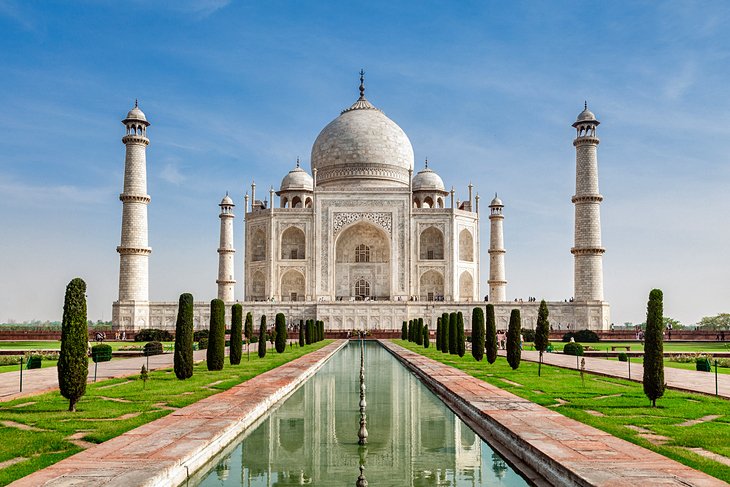
Perhaps India's most recognizable building, the Taj Mahal is also the world's most famous testimony to the power of love. Named after Mumtaz Mahal, the favorite wife of Emperor Shah Jahan, this most beautiful of mausoleums was begun upon her death in 1631 and took 20,000 workmen until 1648 to complete.
Incorporating many elements of Islamic design including arches, minarets, an onion-shaped dome, and black calligraphy inlaid around the entrance, the Taj Mahal is largely constructed of white marble. Adding to its splendor are delicate inlaid floral patterns and precious and semi-precious stones such as jade, lapis lazuli, diamonds, and mother of pearl.
The best time to visit is either at dawn or dusk when the atmosphere is brilliantly altered by the change in lighting. If possible, try to catch a view of the Taj Mahal's reflection from the far bank of the Yamuna River-it makes for a memorable (and safe) selfie.
Address: 64 Taj Road, Agra-282001
- Read More: Attractions & Places to Visit in Agra
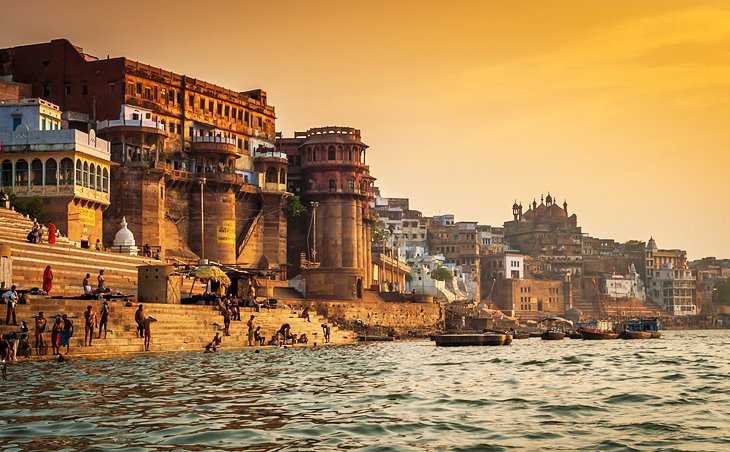
Dating back to the 8th century BC, Varanasi is one of the oldest still inhabited cities in the world. A major pilgrimage center for Hindus, this holy city has long been associated with the mighty Ganges River, one of the faith's most important religious symbols.
Varanasi offers many reasons to visit , not least of them the chance to explore the Old Quarter adjacent to the Ganges where you'll find the Kashi Vishwanath Temple , built in 1780. The New Vishwanath Temple with its seven separate temples is also of interest.
Bathing in the Ganges is of great importance to Hindus, and numerous locations known as "ghats" feature stairways leading to the water where the faithful bathe before prayers. The largest are Dasashvamedh Ghat and Assi Ghat . The latter, at the confluence of the Ganges and Asi rivers, is considered particularly holy.
Also worth seeing is Banaras Hindu University , established in 1917 and noted for its massive library with more than a million books, and the superb Bharat Kala Bhavan museum featuring fine collections of miniature paintings, sculptures, palm-leaf manuscripts, and local history exhibits.
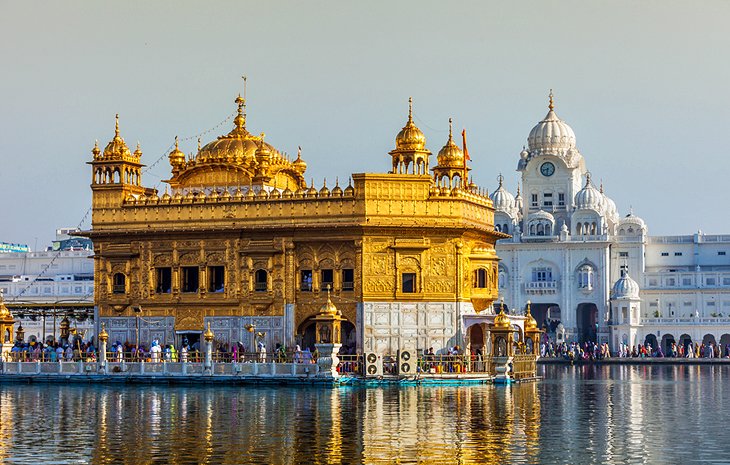
Founded in 1577 by Ram Das, Amritsar is an important hub of Sikh history and culture. The main attraction here is Harmandir Sahib, opened in 1604 and still often referred to as the Golden Temple for its beautiful gold decoration.
The holiest of India's many Sikh shrines (it also attracts many Hindus and people of other faiths), the temple was built in a blend of Hindu and Islamic styles. Its lower marble section features such flourishes as ornate inlaid floral and animal motifs, while the large golden dome represents a lotus flower, a symbol of purity to Sikhs.
In addition to its splendid design, visitors are equally impressed with the temple's spiritual atmosphere, an effect enhanced by the prayers continuously chanted from the Sikh holy book and broadcast throughout the complex.
Part of the overall experience – and visitors are welcome to participate – is the chance to enjoy one of the 50,000 free meals the attraction serves up to visitors each and every day.
Address: Golden Temple Road, Amritsar, Punjab 143006
- Read More: Attractions & Places to Visit in Amritsar
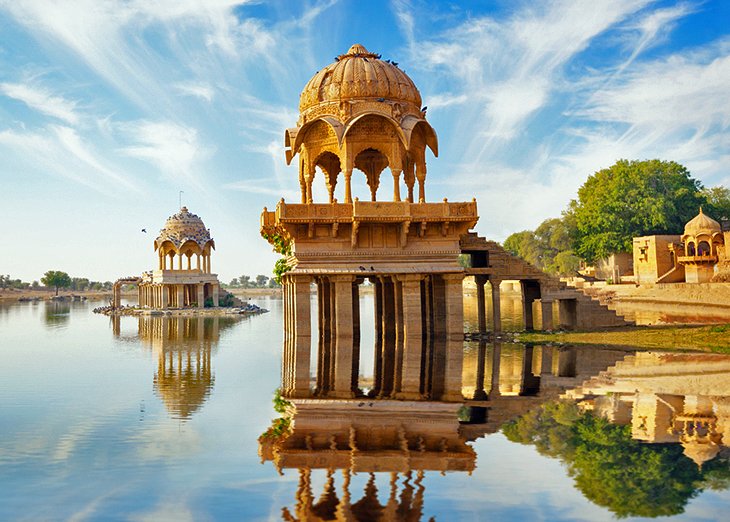
So named for the yellow sandstone used in most of its buildings, the Golden City of Jaisalmer is an oasis of splendid old architecture that rises from the sand dunes of the Thar Desert . Once a strategic outpost, today the city is filled with splendid old mansions; magnificent gateways; and the massive Jaisalmer Fort , also known as the Golden Fort, a daunting 12th-century structure that rises high above the town.
In addition to its palaces, temples, and fine old homes, the fortress boasts 99 bastions along with massive gates leading to its main courtyard where you'll find the seven-story-tall Maharaja's Palace . Started in the early 1500s and added to by successive rulers right up until the 19th century, the palace offers sections open to the public, including areas beautifully decorated with tiles from Italy and China, and intricately carved stone doors.
There are also a number of Jain temples dating from the 12th to 16th centuries, each decorated with fine marble and sandstone images, palm-leaf manuscripts, and brightly painted ceilings. Be sure to also check out the well-preserved 1,000-year-old library, Gyan Bhandar, with its many 16th-century manuscripts and antiquities.
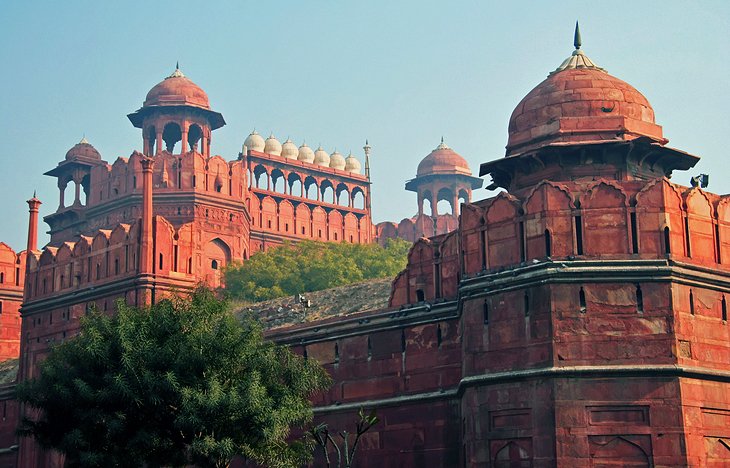
Built by Shah Jahan in 1648 as the seat of Mughal power – a role it maintained until 1857 – the magnificent crescent-shaped Red Fort in New Delhi, named after the stunning red sandstone used in its construction, covers a vast area of more than two square kilometers, all of it surrounded by a large moat.
Highlights include its two largest gates: the impressive Lahore Gate (the fort's main entrance) and the elaborately decorated Delhi Gate , once used by the emperor for ceremonial processions.
A fun part of a visit is exploring Chatta Chowk , a 17th-century covered bazaar selling everything from jewelry to silk garments, as well as souvenirs and food items. While you can explore the fort yourself, guided tours are offered and provide a fascinating insight into the life and times of the Shah, including a peek into the stunning white marble Hall of Public Audiences (Diwan-i-Am) where he received his subjects.
Hot Tip: Try to stick around for the sound and light show held each evening featuring important events in the fort's history.
Address: Netaji Subhash Marg, Chandni Chowk, New Delhi, Delhi 110006
- Read More: Top-Rated Tourist Attractions in Delhi and New Delhi
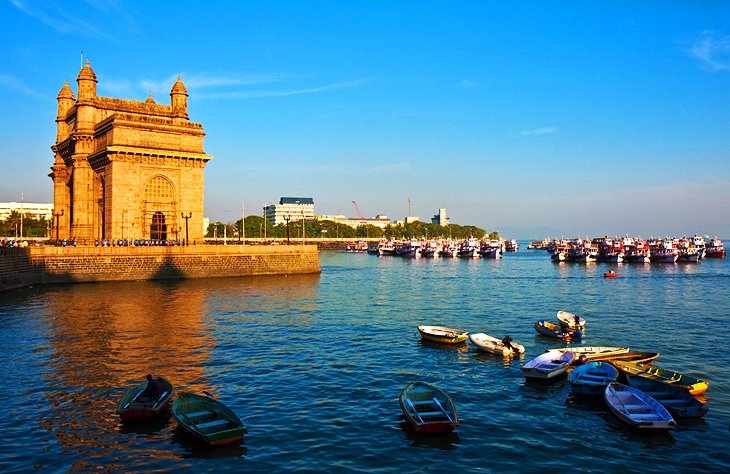
Standing an impressive 26 meters tall and overlooking the Arabian Sea, the iconic Gateway of India is a must-see when in Mumbai. Built to commemorate the arrival of King George V and his wife Queen Mary in 1911, this stunning piece of architecture was opened with much pomp and ceremony in 1924 and was, for a while, the tallest structure in the city.
Constructed entirely of yellow basalt and concrete and notable for its Indo-Saracenic design, the Gateway of India was also the scene of a rather less jubilant procession of British soldiers in 1948 when India gained its independence. These days, the huge archway provides a stunning backdrop that is as popular among locals as it is tourists.
Hot Tip: After visiting the Gateway of India, pop over to the adjacent Taj Mahal Palace and Tower for a delectable High Tea, a fun thing to do in Mumbai since this lovely luxury hotel opened in 1903.
- Read More: Top-Rated Tourist Attractions in Mumbai
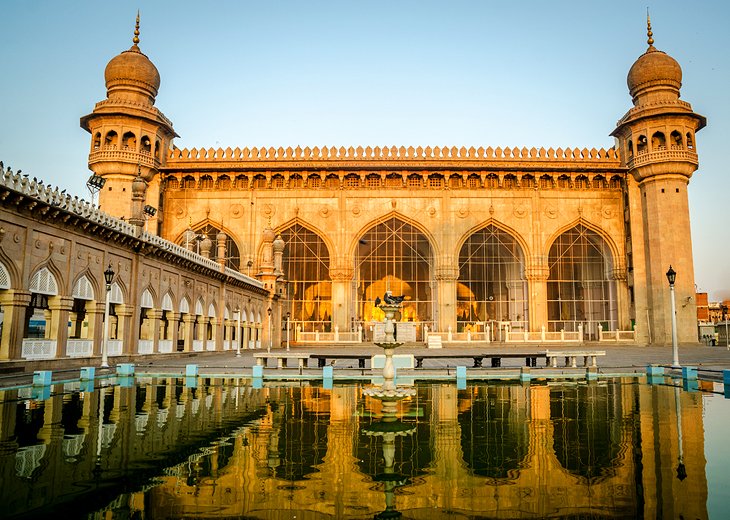
Construction of Hyderabad's Mecca Masjid, one of the world's largest mosques – and one of the oldest in India – began in 1614 during Mohammed Quli Qutub Shah's reign and took almost 80 years to complete.
Large enough to accommodate 10,000 worshipers, this beautiful mosque's 15 enormous arches and pillars were each wrought from single slabs of black granite dragged to the site by huge cattle trains reputedly consisting of up to 1,400 bulls.
Taking its name from the bricks above the central gate that were brought here from Mecca, this impressive complex features highlights such as its main gateway, a huge plaza, and a large manmade pond. There's also a room that houses the hair of Prophet Mohammed.
Other notable features include inscriptions from the Quran above many of the arches and doors, the exquisite roof of the main hall, and the cornices around the entire mosque structure. Look out for the exquisite floral motifs and friezes over the arches.
Address: Hyderabad, Telangana 500002
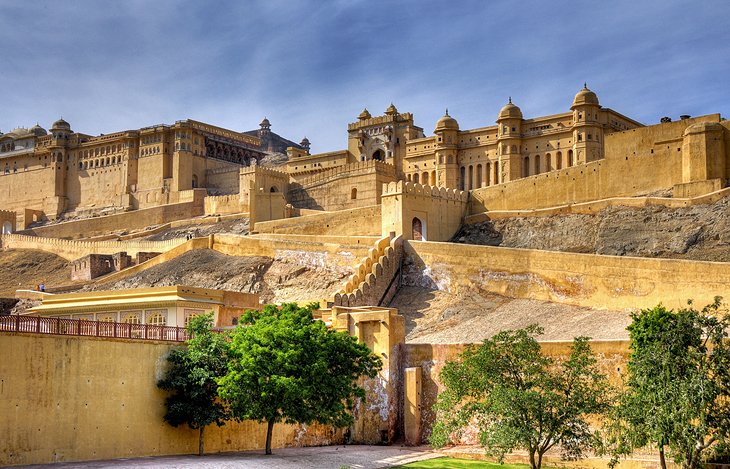
Amer Fort (often also spelt "Amber") was built as a fortified palace in 1592 by Maharaja Man Singh I and has long served as the capital of Jaipur. Carved high up into the hillside, the fort is accessible on foot via a steep climb or by shuttle rides from the town below (better still, let an elephant do the work).
Highlights include Jaleb Chowk, the first courtyard, with its many decorated elephants, and the Shila Devi Temple, dedicated to the goddess of war. Also of note is the adjoining Hall of Public Audience (Diwan-i-Am) with its finely decorated walls and terraces frequented by monkeys.
Other highlights include Sukh Niwas (the Hall of Pleasure) with its many flowerbeds and a channel once used to carry cooling water, and the Temple of Victory (Jai Mandir), notable for its many decorative panels, colorful ceilings, and excellent views over the palace and the lake below.
Just above Amer Fort is Jaigarh Fort , built in 1726 by Jai Singh and featuring tall lookout towers, formidable walls, and the world's largest wheeled cannon. Be sure to also spend time wandering the walled Old City of Jaipur with its three fully restored gates and splendid bazaars, as well as the delightful City Palace , a massive complex of courtyards, gardens, and buildings.
- Read More: Attractions & Places to Visit in Jaipur
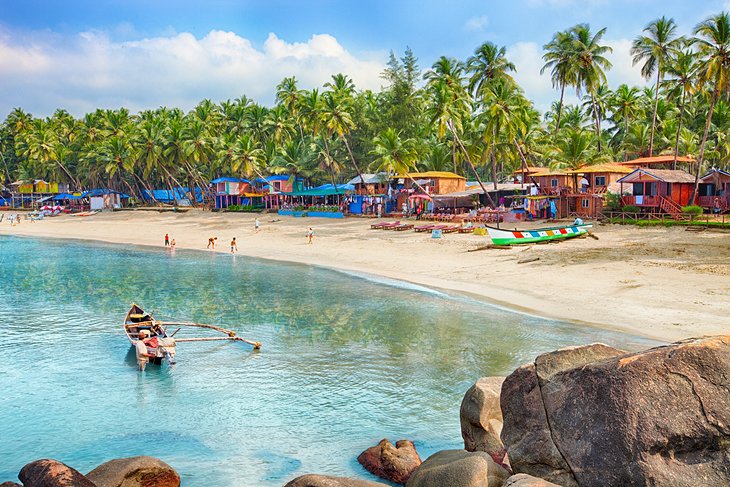
Long known within India as the "go-to" destination for those seeking a great beach holiday, Goa's beautiful western coastline, overlooking the Arabian Sea, has only recently been discovered by tourists from overseas. Goa's more than 60 miles of coastline is home to some of the world's loveliest beaches, each with their own particular appeal.
For those looking for peace and quiet, isolated Agonda Beach is a good choice, while Calangute Beach is by far the most commercial and crowded. For those in search of posh resorts, yoga getaways, and spa vacations, the beaches of Mandrem , Morjim , and Ashwem are fashionable among wealthy Indians and Westerners alike. Palolem is another one of Goa's popular beaches in a beautiful setting.
While in Goa, be sure to visit the Bhagwan Mahavir Wildlife Sanctuary . This superb attraction is home to thick forests and plenty of fauna, including deer, monkeys, elephants, leopards, tigers, and black panthers, as well as India's famous king cobras, and some 200 species of birds.
Also worth a visit is Divar Island , accessed by ferry from Old Goa. Highlights include Piedade , a typical Goan village and home to the Church of Our Lady of Compassion with its interesting stucco work, Baroque plaster decorations, and altars, as well as stunning views of the surrounding countryside.
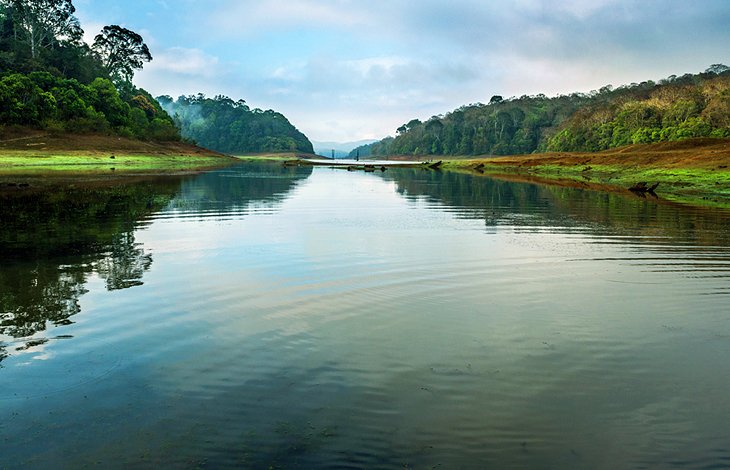
One of South India's most popular tourist attractions, Periyar National Park and Wildlife Sanctuary is centered around a lake built by British engineers in 1895 for irrigation and to provide water to the city of Madurai.
Established in 1934, this beautiful park is home to numerous species of mammals, including a large free-roaming Indian elephant population, wild boar, otters, the lion-tailed macaque, and more than 20 Bengal tigers. Bird-watching is a popular activity with frequent sightings of species such as darters, storks, kingfishers, hornbills, and racket-tailed drongos, along with many interesting varieties of butterflies.
The best ways to enjoy the park's splendid mountain scenery are to take a lake cruise or guided jungle walk, the latter allowing visitors a chance to come face to face with elephant herds and observe other wildlife from watchtowers and viewing platforms.
Hot Tip: Be sure to stop at one of the many nearby spice, tea, or coffee plantations for a tour.
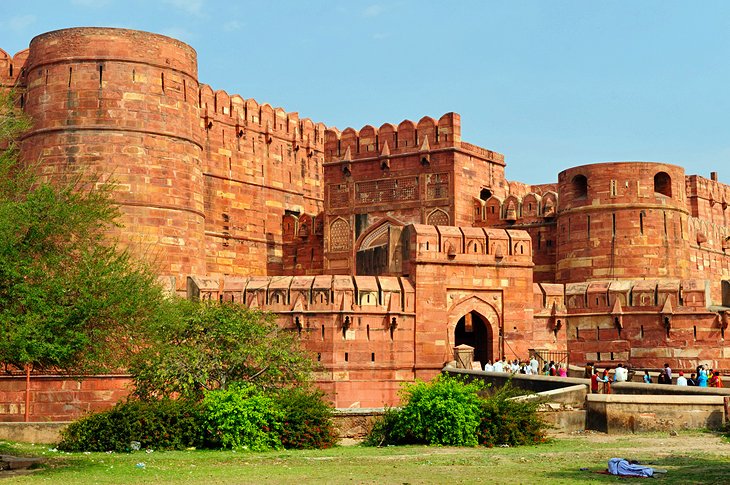
Built as a military structure in 1565 by Emperor Akbar with later additions by Shah Jahan, the stunning Agra Fort (also known as Agra's Red Fort) is an interesting mix of both Hindu and Muslim influences.
Located a little more than two kilometers from the Taj Mahal , the fort is entered through Amar Singh Gate with its low outer wall and dogleg design built to confuse attackers. Once inside, you'll see two large interlinked sandstone buildings, Akbari Mahal and Jahangiri Mahal, the largest private residence in the complex.
Other highlights include the Khas Mahal (Private Palace), with its splendid copper roof, and the Anguri Bagh (Grape Garden), a jigsaw-patterned Mughal garden with numerous wonderful fountains and water channels as well as screens that once offered a private area for the emperor and his entourage. Also of note is the octagonal Musamman Burj tower, which later served as Shah Jahan's prison until his death.
Address: Rakabganj, Agra, Uttar Pradesh 282003
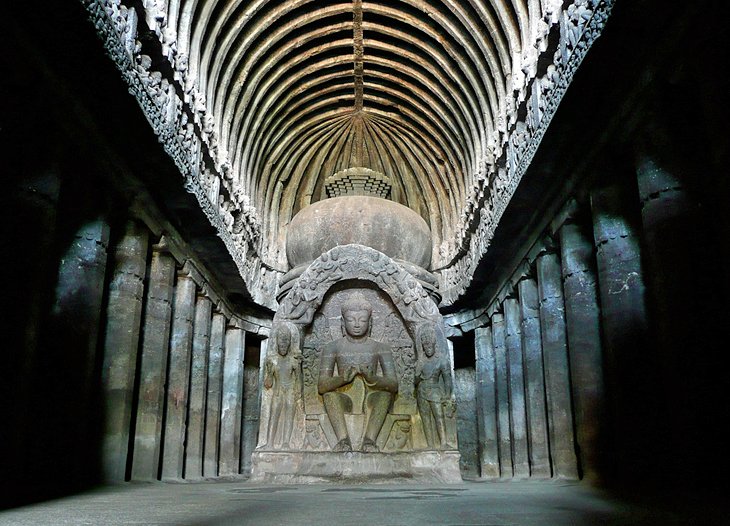
The famous monumental Ellora Caves were built between the 5th and 10th centuries by Buddhist, Jain, and Hindu monks, and make for an excellent excursion from Mumbai, some 300 kilometers to the west.
Now a UNESCO World Heritage Site, this remarkable collection of 34 carved monasteries, chapels, and temples – 12 of them Buddhist, 17 Hindu, and five belonging to the Jain faith – were built in close proximity to each other, a reflection of the religious tolerance that existed during this period of Indian history.
Of the Buddhist monastery caves, highlights include a number of shrines featuring carvings of Buddha and saints dating from the 5th to 7th centuries, as well as the stunning Carpenter's Cave, considered one of the finest in India.
The Hindu caves are much more complex and were carved from the top down, so scaffolding was not necessary. Of these, the best is the Kailasa Temple, an enormous rock-cut temple representing Mount Kailasa and requiring the removal of 200,000 tons of rock.
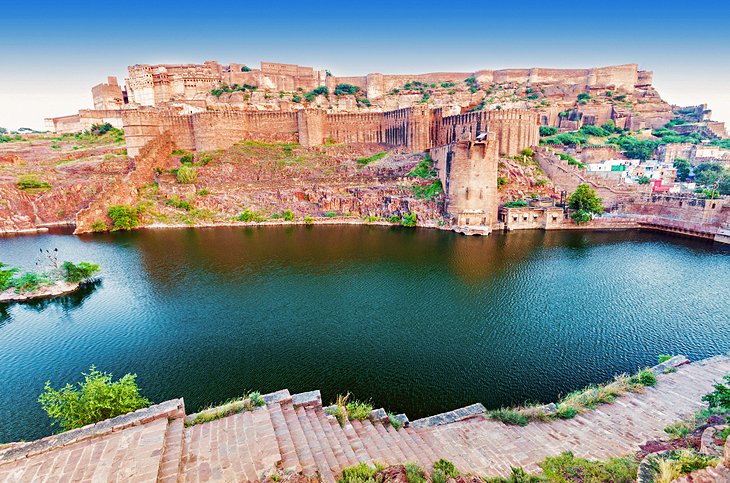
Dominating the old city of Jodhpur, the massive Mehrangarh Fort, one of the largest fortifications in India, was built in the 15th century to safeguard the people of the famous "Blue City." Jodhpur is still known by this name, which is derived from its indigo-colored houses, painted blue to deflect the heat.
Built on top of a towering outcrop, Mehrangarh is an amazing feat of construction, its massive walls all but impenetrable. Access is via one of seven splendid gates, including Jaya Pol and Fateh Pol (the latter still bears scars from cannon attacks).
Highlights of a visit include exploring the fort's fascinating network of courtyards and palaces, as well as a museum housing a splendid collection of artifacts related to the Maharajas. Be sure to spend time in the historic center of Jodhpur itself, famous for its eight city gates, a lovely old clock tower, and numerous bazaars selling everything from vegetables to sweets, spices, and handicrafts.
Address: Fort Road, Jodhpur, Rajasthan 342006
Official site: www.mehrangarh.org
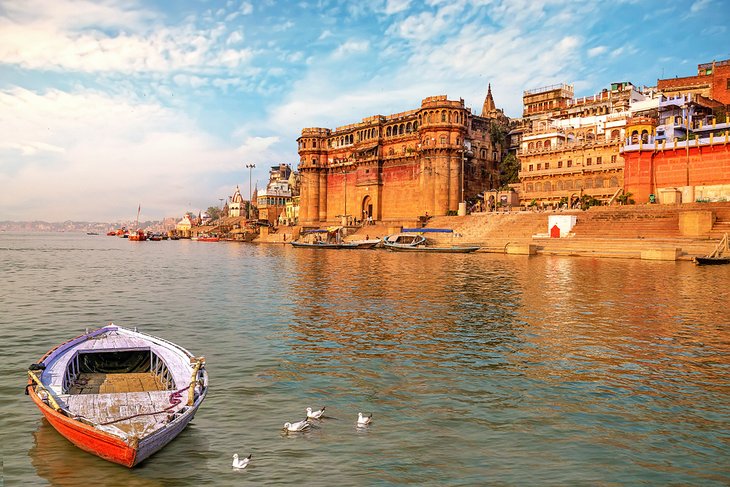
The Ganges River, or "Ganga" after the Hindu goddess, has long been one of India's most revered natural wonders. It's also one of the country's leading attractions , drawing crowds of Indian nationals to partake in its religious ceremonies, as well as tourists to enjoy the splendor of this mighty river.
While there are a number of cities dotted along the river, it's to the city of Varanasi that most tourists will travel to experience the Ganges and the cultural attractions that have sprung up along its banks. Although relatively small by Indian standards – its population is around 1.2 million people – the city is chock-full of temples and other important religious sites, many of them focused on worship of (or on) the Ganges.
Numerous "ghats" are set along the river banks, making it easy for worshippers and tourists alike to get up close. Made up of sometimes steep steps leading directly into the water, there are in fact 88 of these entry points to the Ganges. While most are many centuries old, they were extensively reconstructed and improved in the 1700s, and with their often vibrant, colorful ceremonies and celebrations are some of the most beautiful places to photograph in India .
If you've time, opt for one of the Ganges river tours available in the city from any one of the ghats. The most memorable are the early morning sunrise cruises. Top the experience by purchasing one of the small, floating offerings available from a vendor and set it off down the river (camera at the ready, of course).
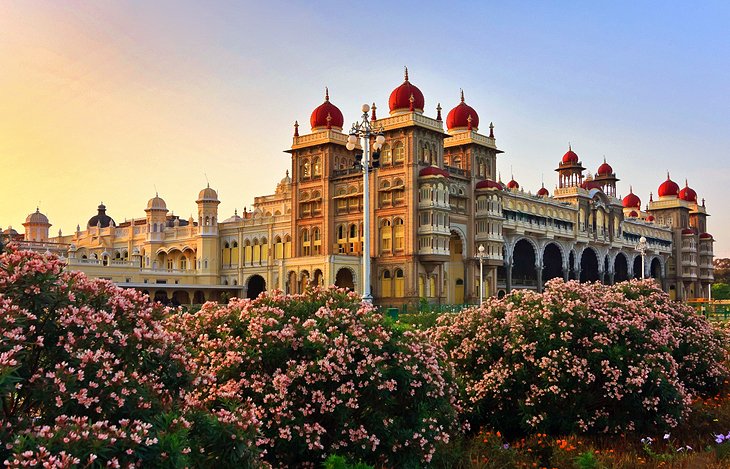
The sprawling city of Mysore is a delight to explore thanks to its eclectic mix of fine old colonial architecture; regal Indian palaces; and lush, well-manicured gardens. While those inclined towards shopping will enjoy spending time in the city's famous silk and sandalwood bazaars, the main attraction is magnificent Mysore Palace.
Completely rebuilt in 1897 after a devastating fire, this beautiful three-storied palace features highlights such as its elegant square towers and domes; the many ornate ceilings and pillars in Durbar Hall; and the splendid Marriage Pavilion, with its glazed floor tiles, stunning stained glass, artworks, and displays of jewelry. It's also where, on special occasions, the exquisite Golden Throne is exhibited.
For a real treat, be sure to catch one of the splendid light displays held each Sunday and during holidays, when the palace is illuminated by more than 90,000 lights. A fun way to explore the palace's massive grounds and gardens is as part of a cycle tour, available free once inside.
Address: Sayyaji Rao Road, Mysuru, Karnataka 570001
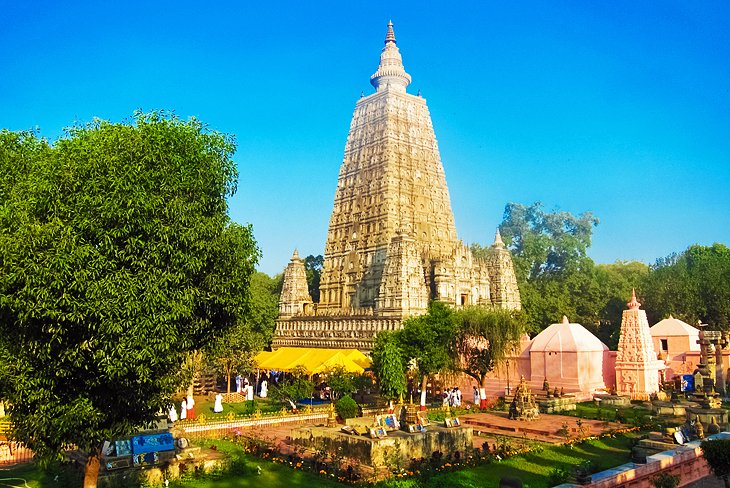
Bodhgaya, considered the world's holiest Buddhist site, attracts thousands of visitors each year, all drawn to participate with the resident monks in meditation and prayer.
The focal point of this place of pilgrimage is stunning Mahabodhi Temple, built next to the very spot where Buddha came to Enlightenment and formulated his philosophy on life. Constructed in the 6th century and restored numerous times since, the temple is topped with a beautiful pyramidal spire and houses a large gilded statue of Buddha.
Also of interest is the site's pipal tree, a descendant of the original bodhi tree where Buddha meditated for seven days after the Enlightenment, said to be among the oldest and most venerated trees in the world (you'll know you've found it when you spot the red sandstone slab marking the spot).
Address: Bodhgaya, Bihar 824231
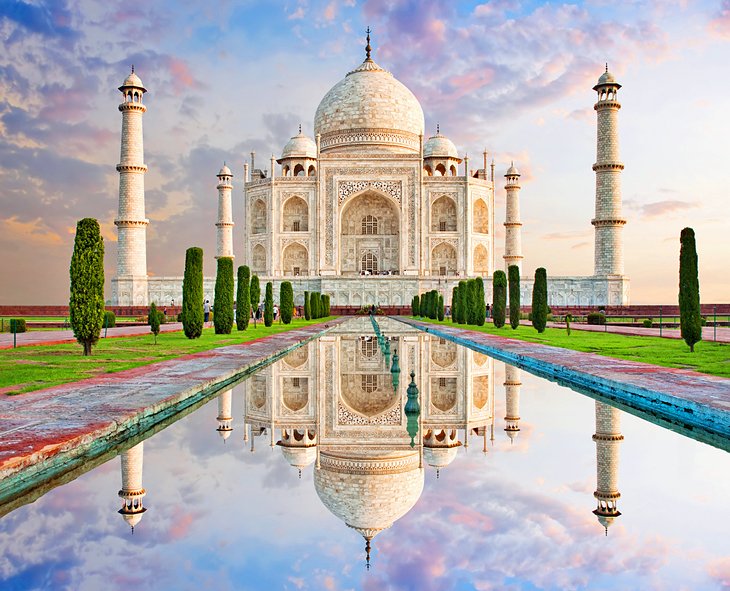
The best time to visit India is between November and March . That's when much of the country experiences cooler temperatures and significantly less rain. Most tourists visit in November and December.
In New Delhi, you can expect temperatures to range from as cool as seven degrees Celsius in the evenings to as high as 30 degrees Celsius during the peak of the day late in the season. The temperatures in the mountains of North India can get quite chilly during this time , so pack clothing that will keep you warm and allow you to traverse snow if you plan to go trekking in the Himalayas.
South India is a bit hotter during this time , but not unbearable for sightseeing. In Mumbai in December, tourists can expect daytime temperatures of 32 degrees Celsius and nighttime temperatures of 18 degrees Celsius on average. Tamil Nadu, Kerala, and Goa are all excellent destinations to include in your itinerary if you're going to India between November and March.
The nice weather makes November through March the busiest time of year to visit India. If you're trying to stay away from the crowds, avoid going to India in the later months of the year. The country typically sees well over a million foreign tourists each month during November and December.
Tourism dips slightly from January through March, making these months a better time to visit popular tourist attractions in India (like the Taj Mahal ) and avoid peak rates on accommodations. Plus, the weather is not yet sweltering in North India.

More on India
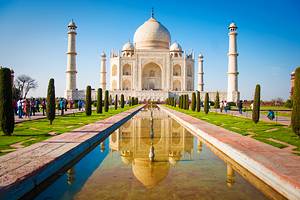

25 Incredible Tourist Places to Visit in Jaipur
Jaipur adds a dash of pink to the colorful state of Rajasthan. Popularly known as the ‘Pink City of India’, this exotic destination is ideal for a luxe trip. Brimming with hospitality and luxuriance, Jaipur is the perfect spot for indulgence for tourists from across the world. The eclectic mix of traditional and modern attractions keep travelers with varying interests entertained for days.
The welcoming and vibrant Pink city is an ideal place for exploring Rajasthani culture and heritage. As you walk through the lanes of the city, you experience the opulent lives of the Rajputana kings through the splendid forts, palaces and Havelis splattered all across. You can also visit the museums and memorials of prominent kings of the land to step into their shoes and experience royalty.
Beyond exploring the top places to visit in Jaipur such as the magnificent Amber Fort, Hawa Mahal, Jaigarh Fort, and Hawa Mahal, you can indulge in delicious Rajasthani cuisine and shop at its sprightly bazaars. The markets at Johari Bazar, Bapu Bazar, and MI Road are laden with embroidered leather shoes, embellished handicrafts, regal blue pottery, brilliant tie and dye scarves, camel hide products, and jazzy handmade apparels. You can also witness the beauty of the Thar desert on an exciting camel safari or immerse in the kaleidoscopic Rajasthani culture celebrating local festivals like Dhulandi, Teej, and Gangaur.
Top Places to Visit in Jaipur
Jaipur allures those planning a grand holiday and a rejuvenating trip while diving deep into Indian culture and heritage. The top places to visit in Jaipur are:
1. Amber Fort
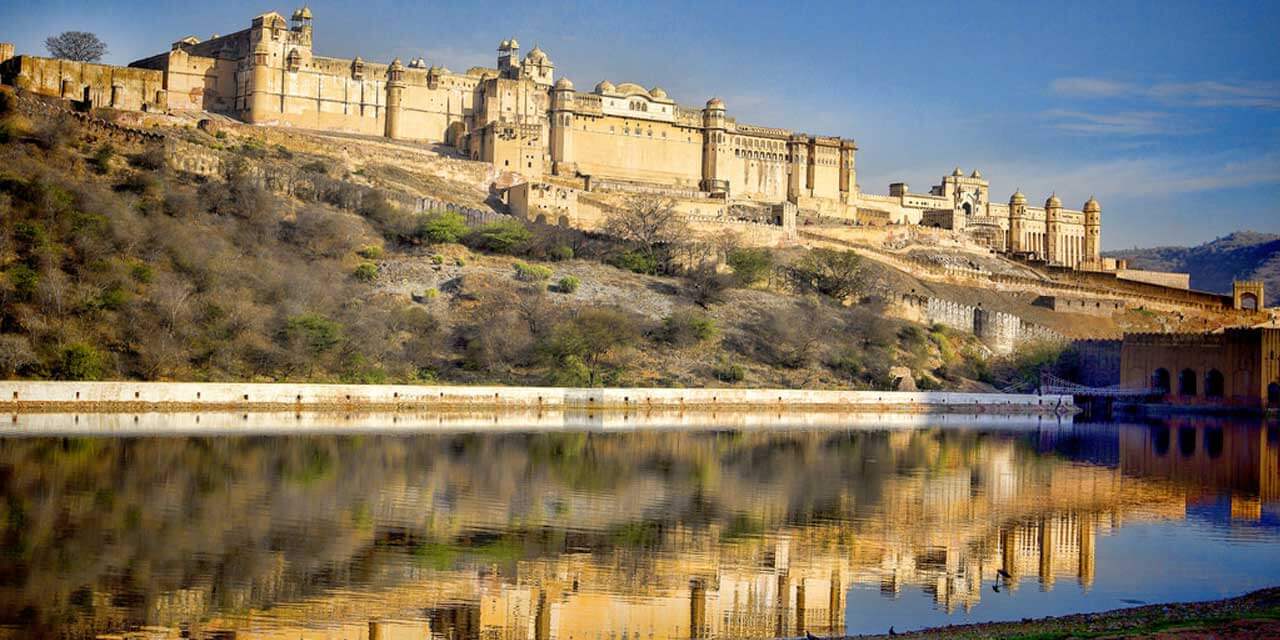
The legendary Amber Fort is a seven centuries old Rajputana palace located around 11 kilometers away from Jaipur. Recognized as a UNESCO World Heritage Site, it is among the most magnificent architectural wonders of India.
Set up on the Aravalli hills, the Amber fort (also known as Amer Fort) was constructed by Raja Man Singh I in 1592 and was completed by Mirja Raja Jai Singh. Built in red and yellow sandstone complemented by white marble, the splendid fortress offers a breathtaking view of the Maota Lake.
The splendid palace is divided into four courtyards and includes attractions such as Diwan-e-Aam, Diwan-e-Khas, Siladevi Temple, and the Sheesh Mahal. The main entrances to the palace are Suraj Pol and Chand Pol, both of which lead to the main courtyard called Jaleb Chowk. You can enjoy an elephant ride to the fort entrance or take a car. After spending three to four hours exploring the fort you can dive into its history with the beautiful light and sound show.
2. Jaigarh Fort
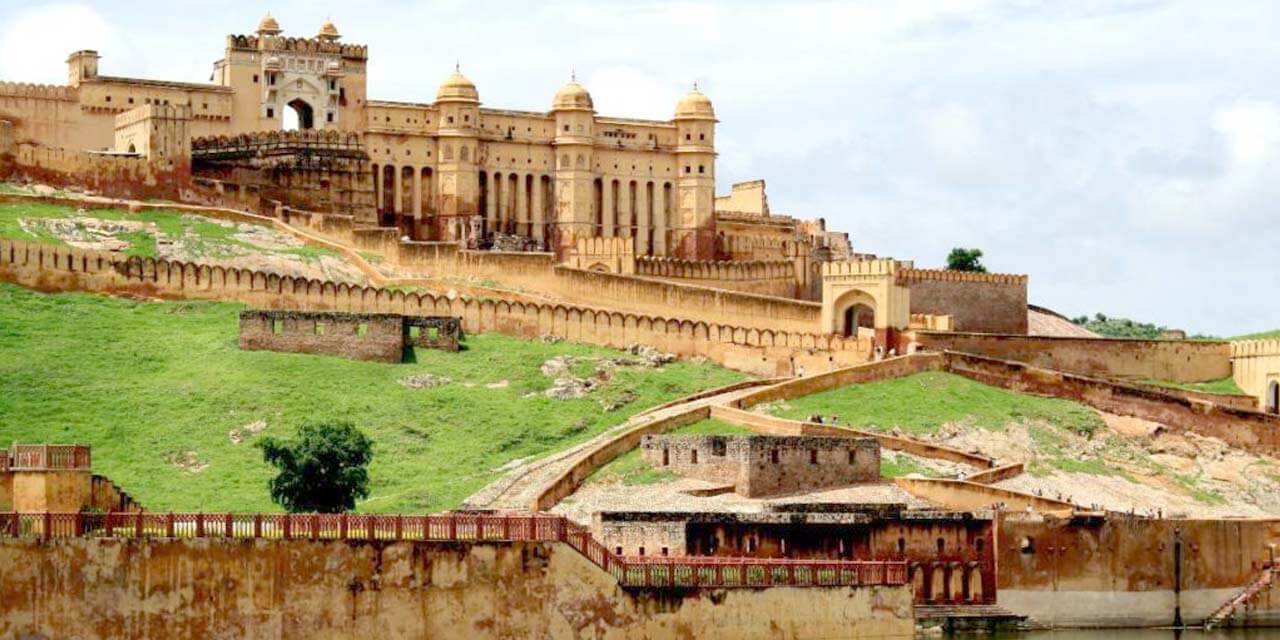
Built on ‘Cheel ka Teela’ or the Hill of Eagles, Jaigarh fort was built to secure the Amber Fort. Located 500 feet above sea level, the fort offers panoramic views of the Amber Fort and its lush surroundings.
Constructed in 1726 under the aegis of Maharaja Sawai Man Singh II, the fort has a splendid blend of Indo-Persian architecture. Intricate lattice work windows adorn the cyclopean walls of the fort to offer unobstructed views of the vicinity. You can walk through the magnificent red sandstone fort and imagine life in the era of the warrior kings that inhabited it ages ago.
One of the major attractions at the fort is 'Jaivana Cannon' which is the world’s largest cannon on wheels and has been fired just once since it’s existence. Other attractions include the central watchtower, the water heritage walk, Shubhat Niwas (the assembly hall of warriors), and armory. The complex also houses several prominent temples such as Kal Bhairav Temple, Ram Harihar Temple, Lalit Mandir, Aram Mandir, and Vilas Mandir.
3. Nahargarh Fort
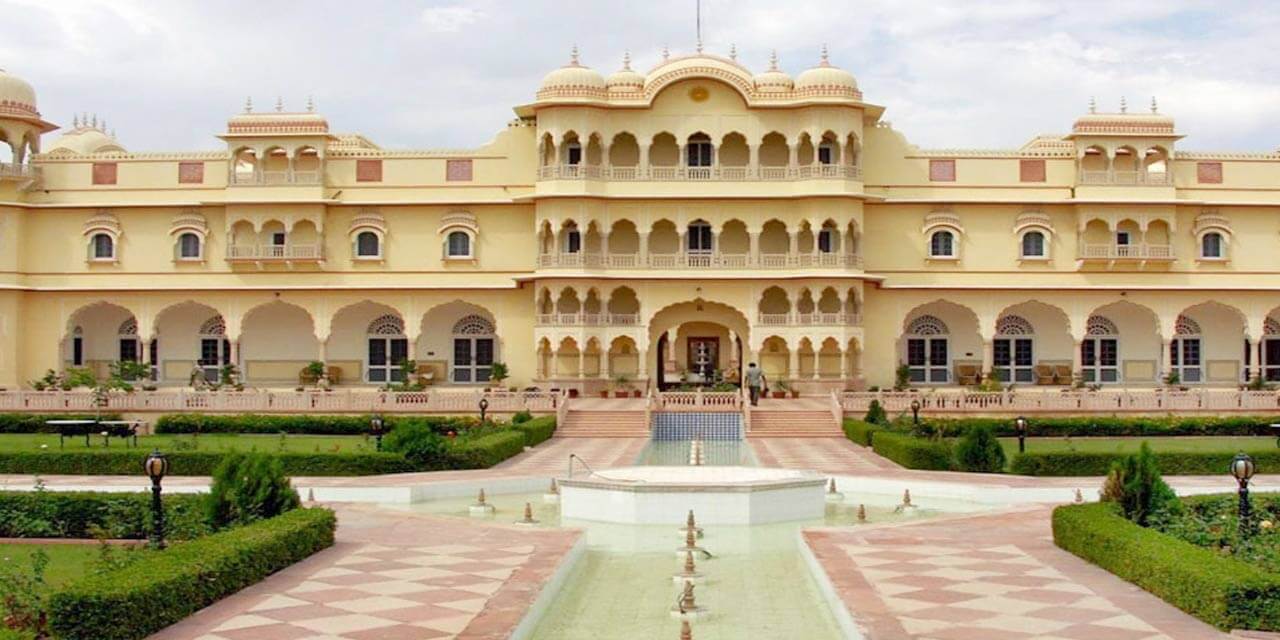
Nahargarh Fort was built amidst the Aravalli Hills to fortify the royal residence of the Rajput warriors, the Amber Palace. This majestic structure has overlooked the beautiful city of Jaipur for 300 years. It was constructed by Maharaja Sawai Jai Singh II in 1734 as a retreat palace for the kings and queens. It’s fascinating Indo-European architecture and glorious past has attracted tourists from across the world.
The Fort has witnessed important historical events during the 18th Century. You delve deeper into history as you visit the temple dedicated to the Kings of Jaipur and also explore the astounding Sheesh Mahal, visit the wax museum, and click pictures near Jal Mahal.
Other not-to-be-missed attractions are 'Madhavendra Bhawan' built by Sawai Madho Singh and the temple of Rathore prince Nahar Singh Bhomia, whose spirit haunted the construction site until the fort was dedicated to him.
4. Jantar Mantar
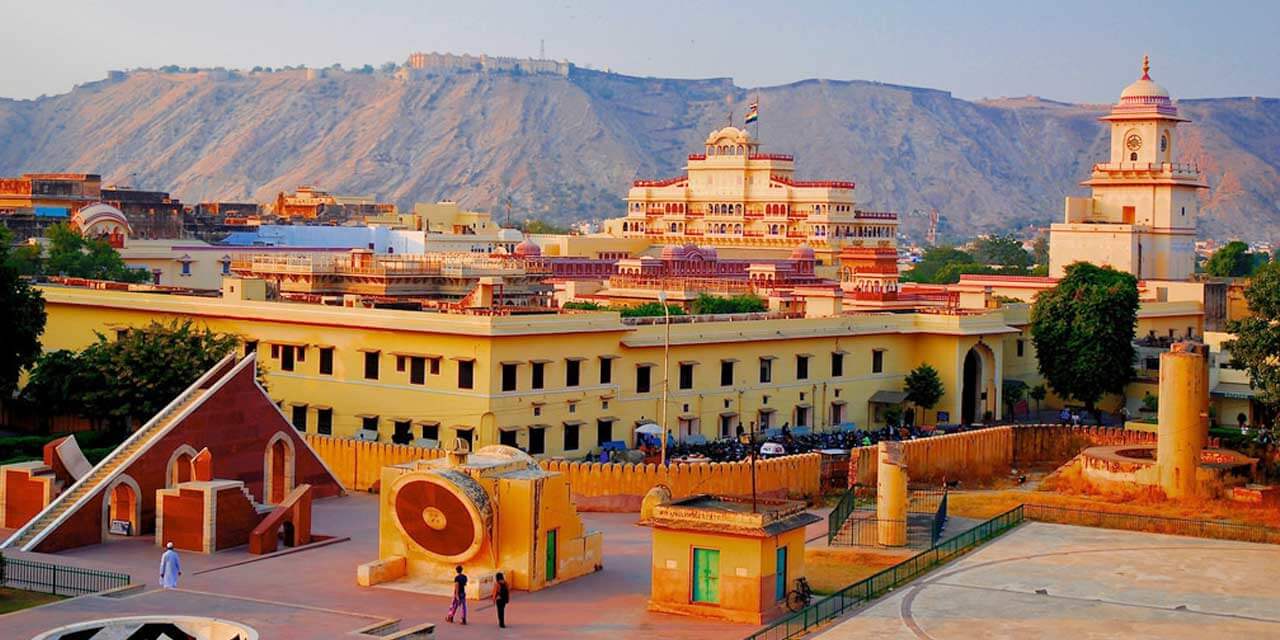
Located in the heart of Jaipur, Jantar Mantar is an astronomical observatory built by Maharaja Sawai Jai Singh II between 1728-1734. The observatory had been a meeting point for scientific cultures from across the world and linked political, social, and religious practices to cosmology.
Recognized as a UNESCO World Heritage site it is the largest among the other five similar ones built in Northern India. It houses large stone instruments with striking combinations of geometric forms to view celestial bodies through naked eyes. The precision and accuracy of these astronomical instruments have been alluring architects, mathematicians, artists, and historians since times immemorial.
The observatory also features the world’s largest stone sundial which calculates local time and manages to entice the interest of tourists to date. To understand the process of determining planetary movements through observation and calculations you must visit Jantar Mantar at noon, as the readings of the instruments are accurate when the sun is overhead.
5. City Palace
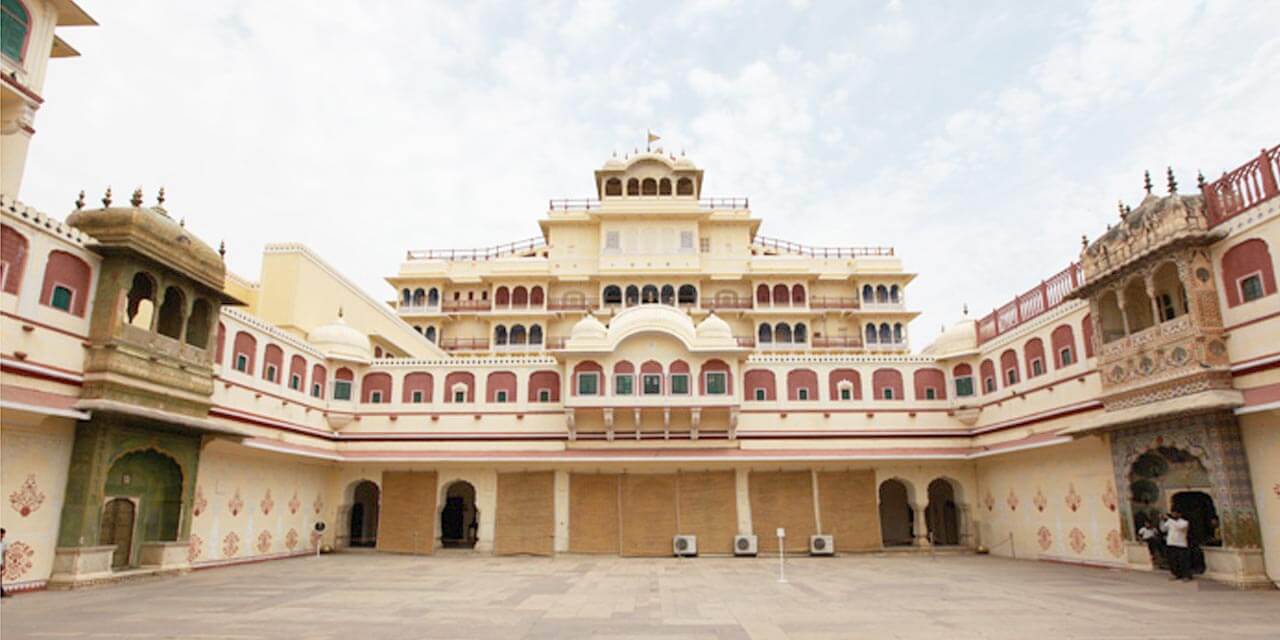
Located in the heart of the old city, the City Palace, comprises magnificent courtyards, gardens, cenotaphs, and royal buildings. It was conceived and built by the founder of Jaipur, the Rajput King Maharaja Sawai Jai Singh II, and expanded by the rulers who inhabited it later.
The palace has elements of Rajput, Mughal, and European architecture intricately put together to exude opulence. Members of the last ruling royal family still reside in a private section of the palace. The most prominent sections of the palace are Mubarak Mahal, Chandra Mahal, Maharani’s Palace, Maharaja Sawai Man Singh II Museum, and Bhaggi Khana.
You can witness the unique collection of royal costumes including Pashmina shawls, Benaras silk sarees, and other clothes of Maharaja Sawai Madho Singh I at the museum. Rajput weaponry dating back to the 15th century and well preserved Rajputana paintings, Sanganeri prints, and folk embroidery pieces adorn the walls and ceilings of the palace.
6. Hawa Mahal
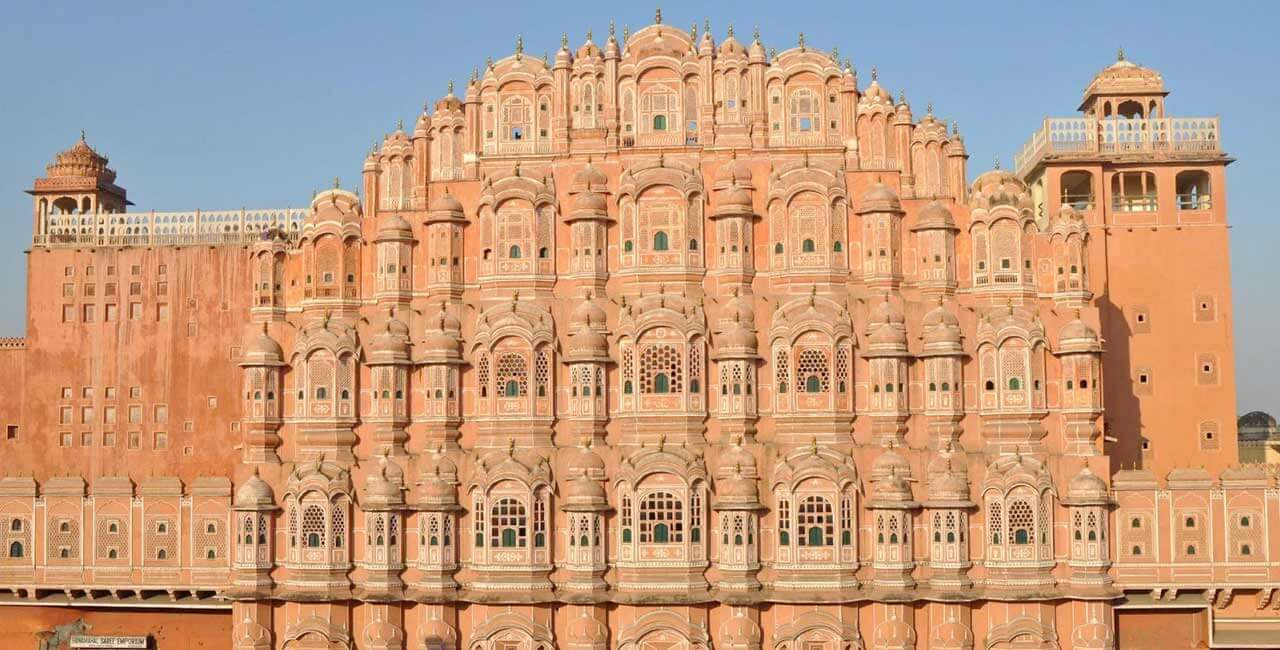
The most iconic landmark of Jaipur, Hawa Mahal is a 200-year-old monument in the heart of the city. Famous for its unique honeycomb design and Indo-Islamic architecture the five-storeyed palace has 953 lattice work windows. It was built in 1799 by Maharaja Sawai Pratap Singh as a summer palace, painted in pink and adorned with floral motifs, dome-shaped arches, and patterned pillars.
The palace was designed to offer unobstructed views of Jantar Mantar, the City Palace, and Sireh Deori Bazaar. Its intricately designed windows called ‘Jharokhas’ enabled the royal ladies to enjoy royal processions and daily market activities on the street without being visible to the public.
Royal celebrations took place on the first floor called the Sharad Mandir, the second floor called the Ratan Mandir was decorated with colorful glass work, the other two floors were named Vichitra Mandir and Hawa Mandir. The top floor known as Prakash Mandir had an open terrace on each side offering breathtaking views of the city. You can visualize their lives looking through the fretwork windows and experience the richness of Rajputana culture through the paintings and ceremonial armor preserved at the museum within the complex.
7. Laxmi Narayan Temple/ Birla Mandir
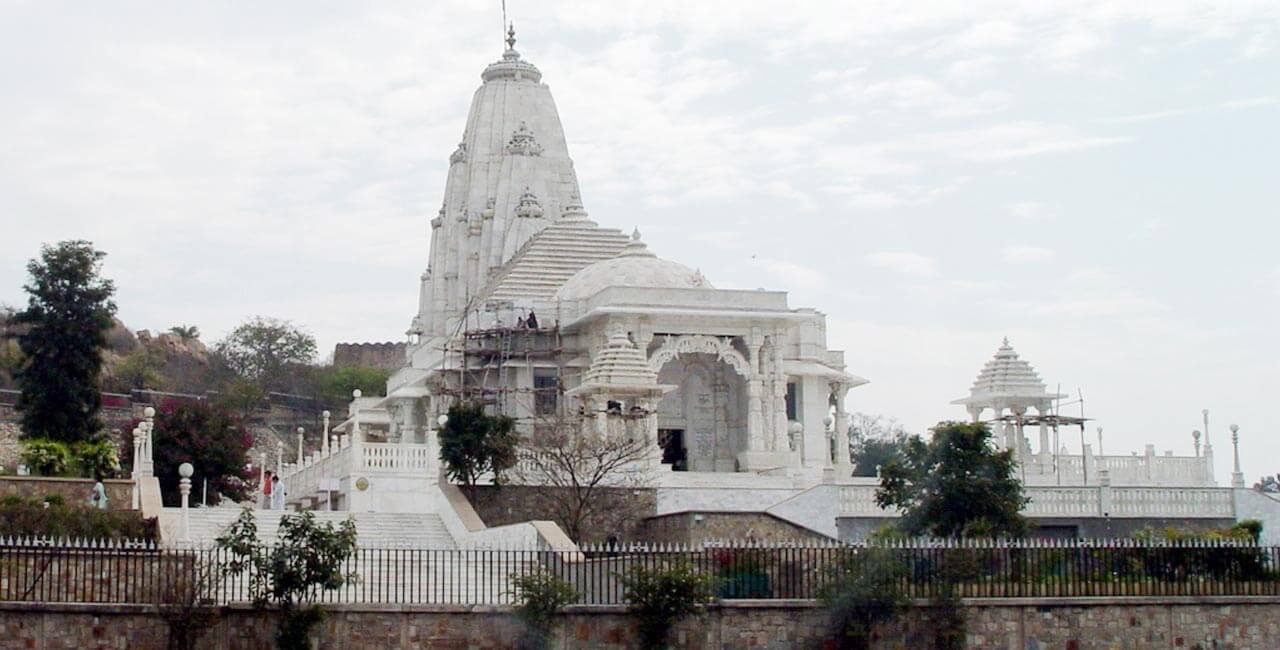
Located at the foothill of Moti Doongri, the Laxmi Narayan Temple or the Birla Mandir was built in 1988 by the B.M Birla Foundation. Land for the temple was given by the Maharaja of Jaipur for a token amount of one rupee. Birla Mandir is renowned for its architectural excellence crafted in pure white marble.
Dedicated to Laxmi (the goddess of wealth) and Narayan (Lord Vishnu), the temple houses hand-sculpted idols of the deities, carved out of single piece marble. Like the other Birla temples across the country, the Laxmi Narayan temple signifies the diversity and richness of Indian culture and the holistic approach of Hinduism.
Its three-dome design is a representation of secularism among different religions in India. Intricate designs and mythology-based carvings adorn the domes, ceilings, and walls of the temple. The presence of statues of great philosophers and religious teachers from across the world represent the inclusiveness of modern Indian culture.
The lush green gardens complement the architectural finesse of the temple and add serenity to the spiritual atmosphere. Tourists of diverse religious beliefs flock to the temple to view its mesmerizing beauty.
8. Moti Doongri Ganesh Temple

Moti Doongri Ganesh Temple is among the most revered temples of Lord Ganesh in Jaipur. It was built by Seth Jai Ram Paliwal and Mahant Shiv Narain in 1761.
Locals associate it with the legend of the King of Mewar who was heading back to his palace with a massive idol of Lord Ganesh on a bullock cart. As per the story, the king decided to build a temple at the first stoppage of the bullock cart. Locals believe that the foot of Moti Doongri Hill was the spot where the bullock cart stopped and the temple was constructed on the site.
An exotic palace was built for Maharaja Madho Singh’s son at the site encompassing the temple. The palace has exteriors similar to those of a Scottish castle and was the royal residence of Maharaja Sawai Man Singh. You can seek blessings at the Ganesh Temple and wow at the exteriors of the palace as it continues to be occupied by the royal family.
9. Govind Dev Ji Temple
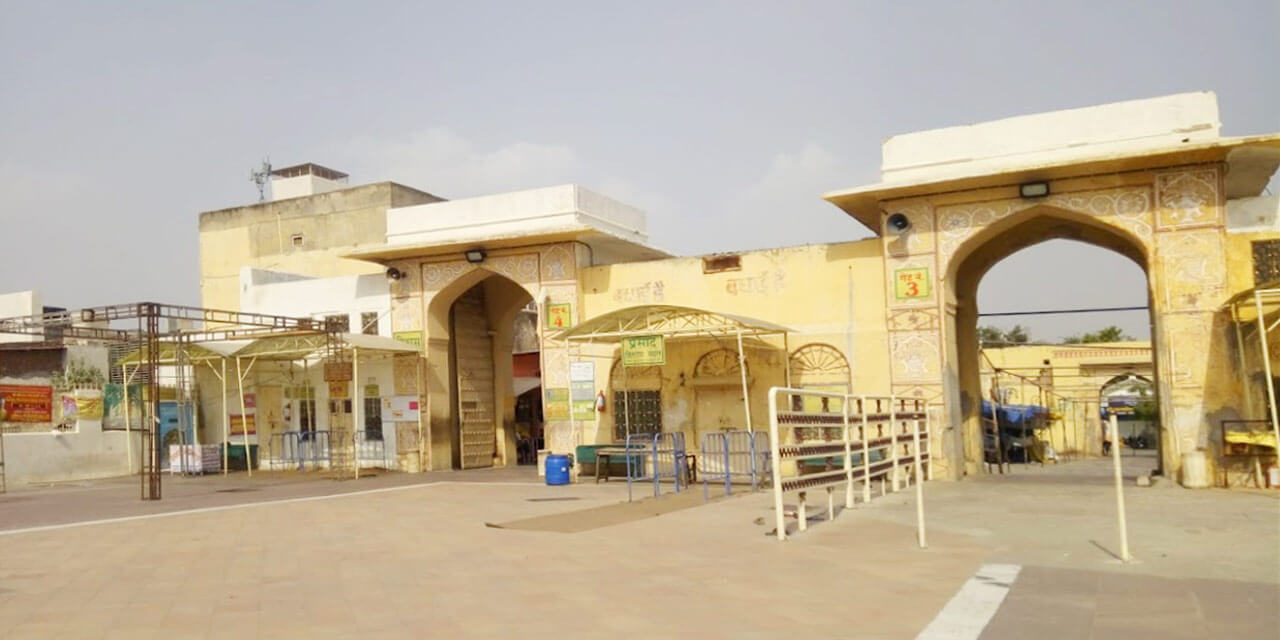
Govind Dev Ji Temple in Jaipur is among the seven revered temples of Vrindavan Thakur Ji. It is located in the City Palace complex and is famous among devotees of Lord Krishna. The temple is exquisitely designed with gold cased ceilings and intricately designed exteriors.
The temple houses the idol of Govind Dev Ji, known as ‘Bajrakrit’. It is believed to resemble Lord Krishna and was sculpted by his great-grandson Bajranabh. The 5000 years old idol was brought to Jaipur from Vrindavan by Raja Sawai Jai Singh, who was a devotee of Lord Krishna.
The temple was strategically placed between Chandra Mahal and Badal Mahal in the complex to ensure the devout king could view the idol from his residence. To date 'Aartis' and 'Prasad' or 'Bhogs' are offered at seven different times during the day. You can plan your visit to the temple around Janmashtami to enjoy the celebrations during the festival.
10. Ram Niwas Garden
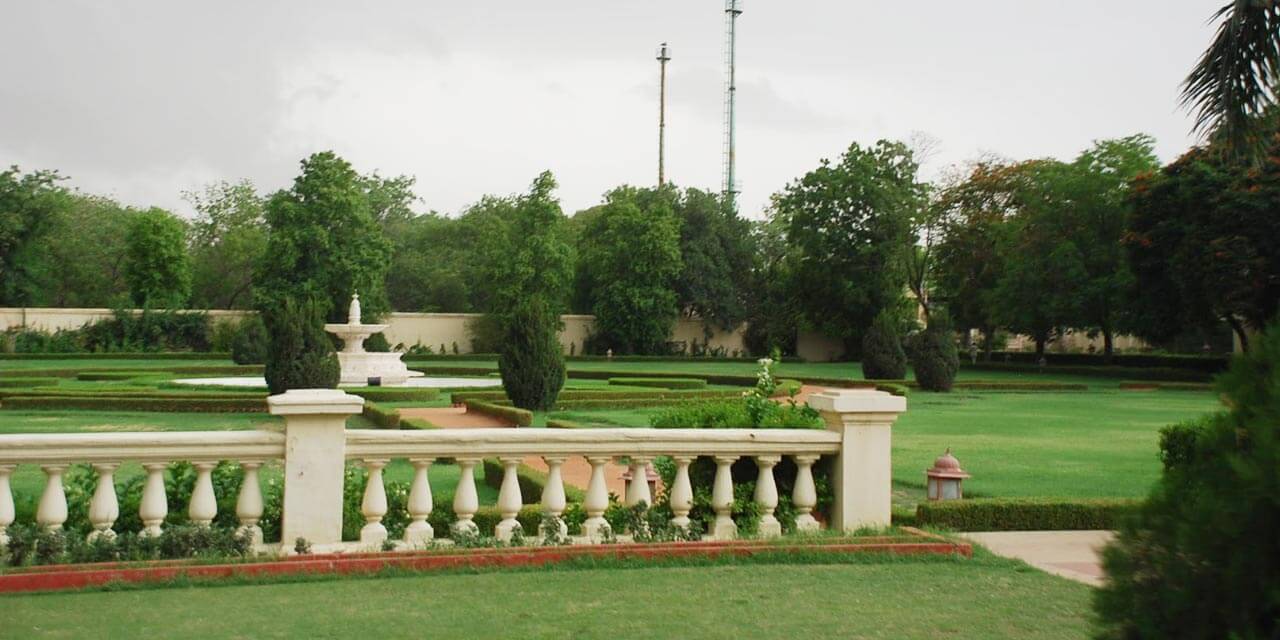
Located in the heart of the pink city, Ram Niwas Garden is a royal garden. It was built in 1868 by Maharaja Sawai Ram Singh. Sprawling over 30 acres of land it attracts tourists from all over the world. The lush green garden is decorated with fountains and has a regal ambiance. It has been flocked by locals and tourists alike since the British Era.
Visitors can also attend the exhibitions held in the park or go bird watching. The park also features a Zoo, a theatre, and an Art Gallery luring a wide variety of travelers. You can relax at the park after a hectic shopping day at Bapu Bazaar which is just next to the park or just rejuvenate enjoying a family picnic outing. Besides the serene atmosphere, there are Quaint cafes around the park that serve delectable Rajasthani snacks.
11. Chokhi Dhani
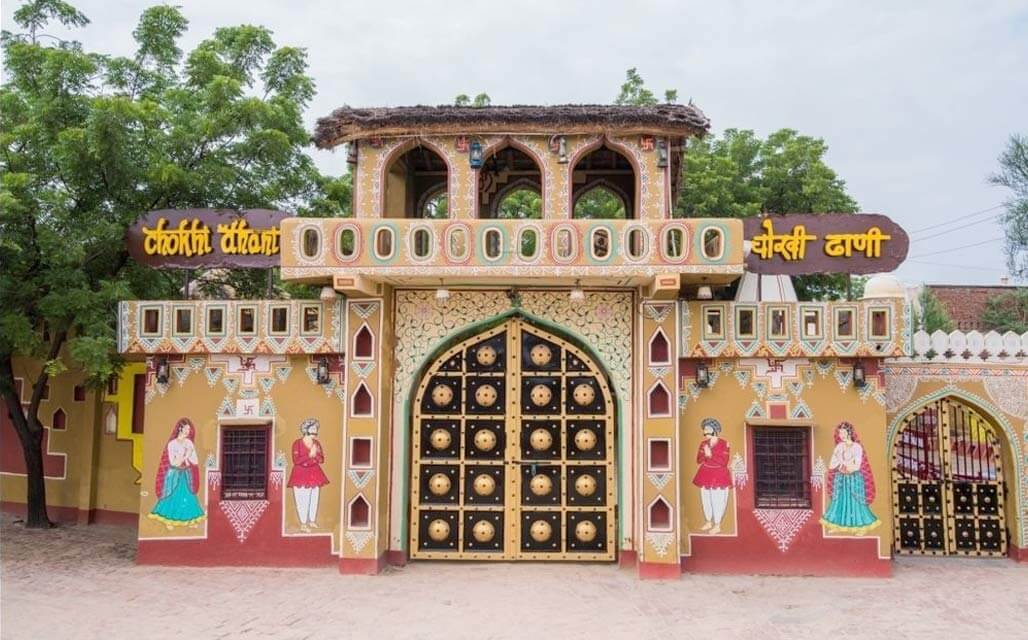
Chokhi Dhani is a Rajasthani theme-based resort located 28 kilometers away from the city. It was established in 1989 to offer a glimpse of rustic village life and authentic Rajasthani lifestyle to tourists. The resort has a traditional vibe- featuring mud huts decorated with ethnic motifs, Rajasthani folk performers singing and dancing to entertain the visitors, and authentic Rajasthani food.
Evenings at the resort are busy and fun. You can enjoy activities such as live folk dance and music (Chaupal Nach Gan Re), acrobatics (Nat Ro Kartab), puppet shows (Kathputali Ro Nach), and magic shows (Jadu Ro Khel). You can shop for local handicrafts at the craft bazaar and take leisurely rides on camels, horses, and elephants.
Chokhi Dhani has been accredited as a 5-star luxury hotel by the Ministry of Tourism. For those looking forward to indulging in the royal culture of Rajasthan, the resort has Royal Cottages and Haveli Suites flaunting their regal décor comprising historical relics, vintage furnishings, and handmade artifacts.
12. Jal Mahal
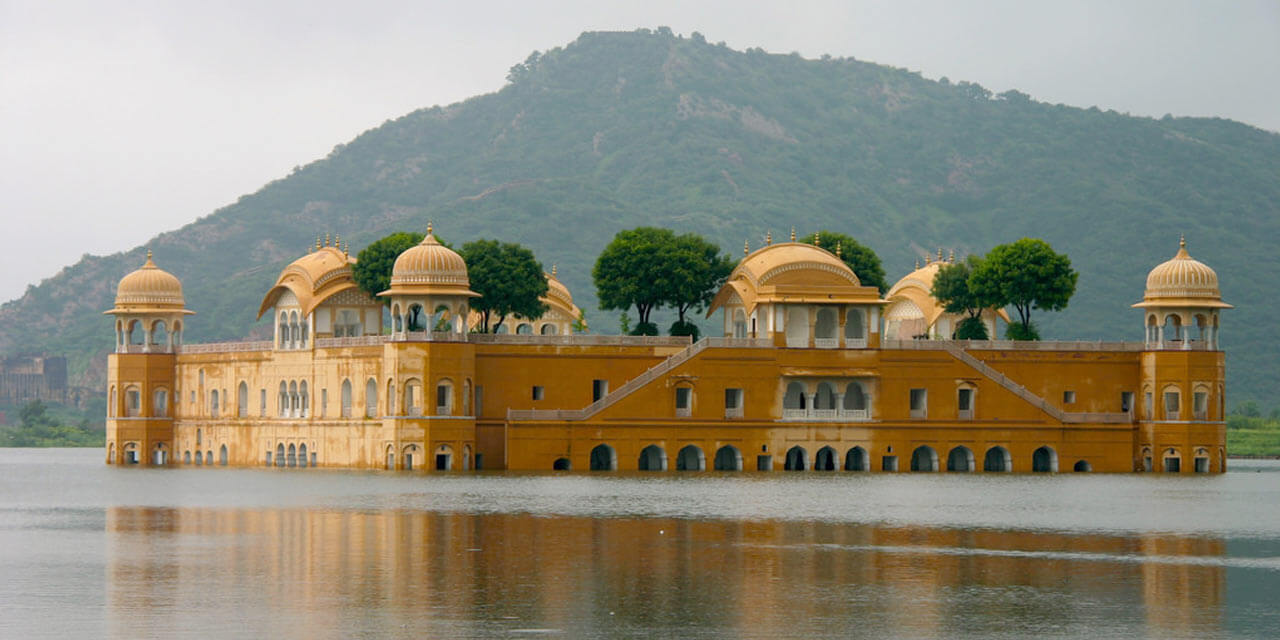
Located 4 kilometer away from Jaipur, Jal Mahal is one of the most popular landmarks of the city. It was built in 1750 by Maharaja Madho Singh as a lodge and hunting retreat. The symmetrical five-story structure of the palace is set in the middle of an artificial lake known as Man Sagar Lake.
The mesmerizing view of the beautiful palace against the backdrop of Aravalli hills and its reflection in the serene lake waters lures thousands of tourists from across the world. Jal Mahal is also recognized as the most photographed structure of India.
Though entry into the palace is reserved, you can explore its beauty while enjoying a boat ride in the lake. You can also spend a rejuvenating evening watching local and migratory birds at the lake. Jal Mahal is a splendid monument located on the main Amer-Jaipur road and can be visited on your way to the Amber Fort.
13. Sisodia Rani ka Bagh
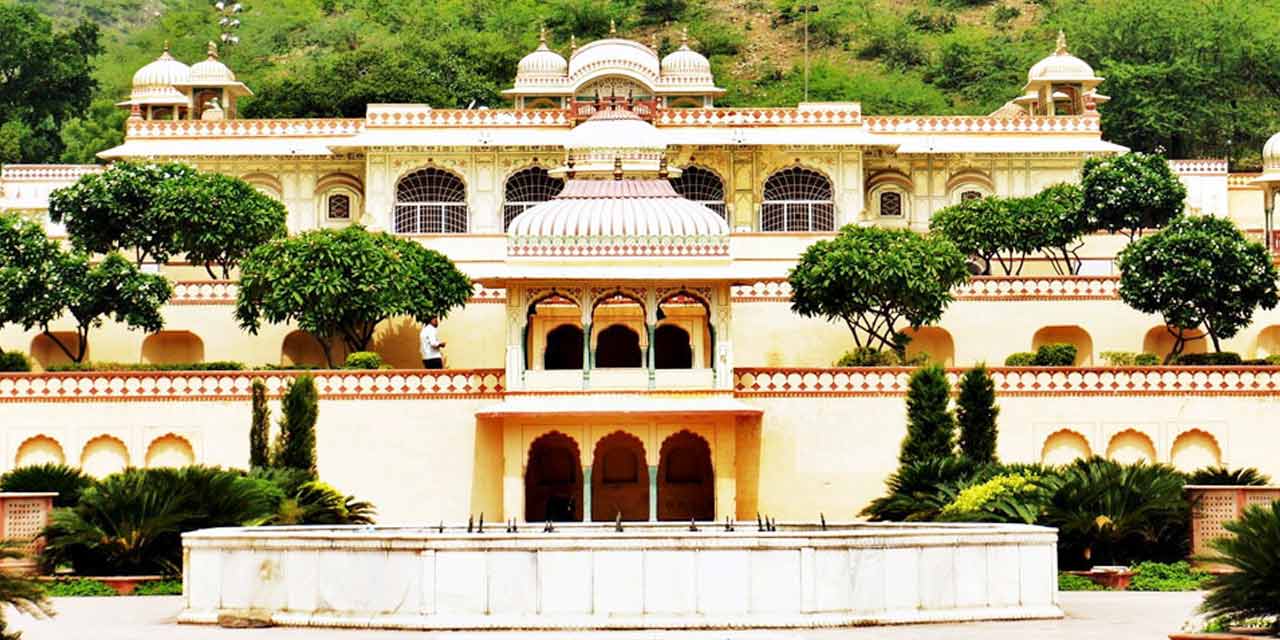
Built by Maharaja Sawai Jai Singh in 1728, Sisodia Rani ka Bagh is a garden dedicated to his beloved second wife, the Princess of Sisodia Rajput clan of Udaipur. Located around 10 kilometers away from Jaipur the lush gardens offer a rejuvenating respite from the bustle of the city.
The garden showcases elements of Indo-Mughal architecture such as water channels amidst beautiful flower beds and walking tracks across the parks. Fountains and natural springs add a splash of royalty to the garden and a shrine dedicated to Hindu deities’ augment spirituality to its ambiance. The walls of the garden are painted with several scenes from the story of Lord Krishna and Radha. You can spend a day amidst nature and rejuvenate in the tranquil setting of the park.
14. Vidyadhar Garden
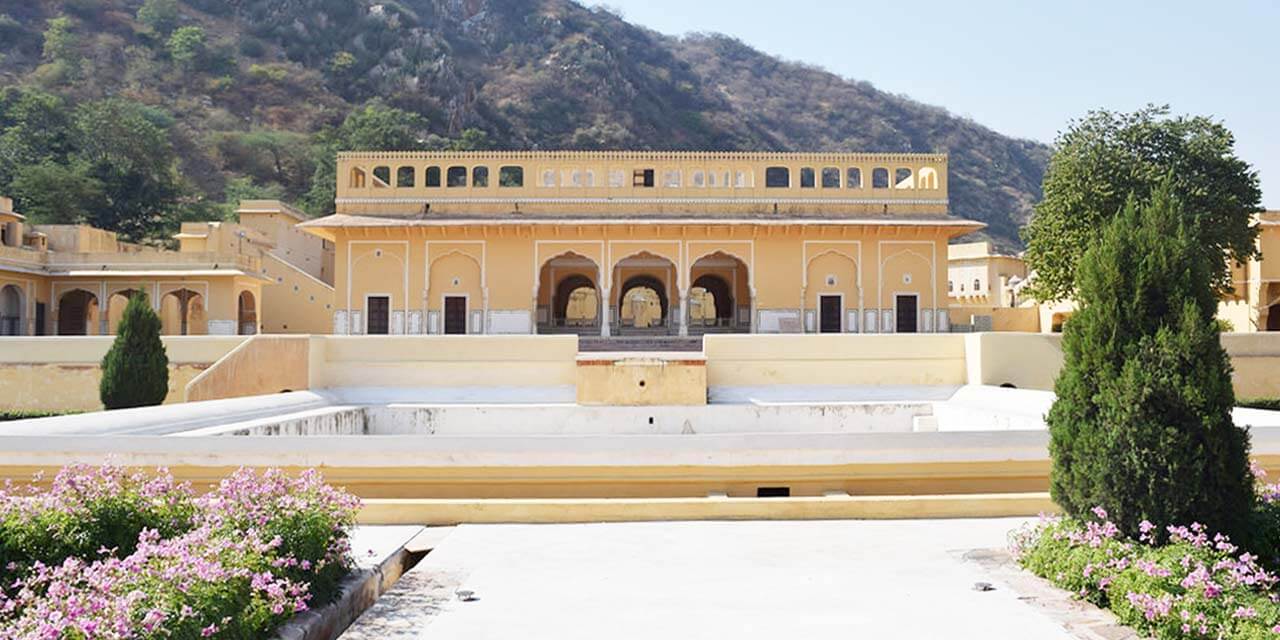
Dedicated to the chief architect of Jaipur, Vidyadhar Garden was built in 1988. Vidyadhar Bhattacharya was a treasured architect in Maharaja Sawai Jai Singh’s court. He was adept with the principles of Hindu architecture known as ‘Shilpa Shastra’.
Vidyadhar Garden is situated around 8 kilometers away from Jaipur on the Jaipur-Agra highway, away from the cacophony of the city, and is taken care of by the Rajasthan Government. The garden has a blend of classical Indian and Mughal architecture with glimpses of Hindu mythology depicted through murals on pavilion walls.
The lush gardens have beautiful flower beds, terraced lawns, and fountains influenced by Mughal designs, are a perfect picnic spot. You can spend time in the garden watching peacocks and other migratory birds while relaxing in the lap of nature. You can also enjoy elaborate Rajasthani meals or grab quick bites at the modern restaurant inside the complex.
15. Albert Hall Museum
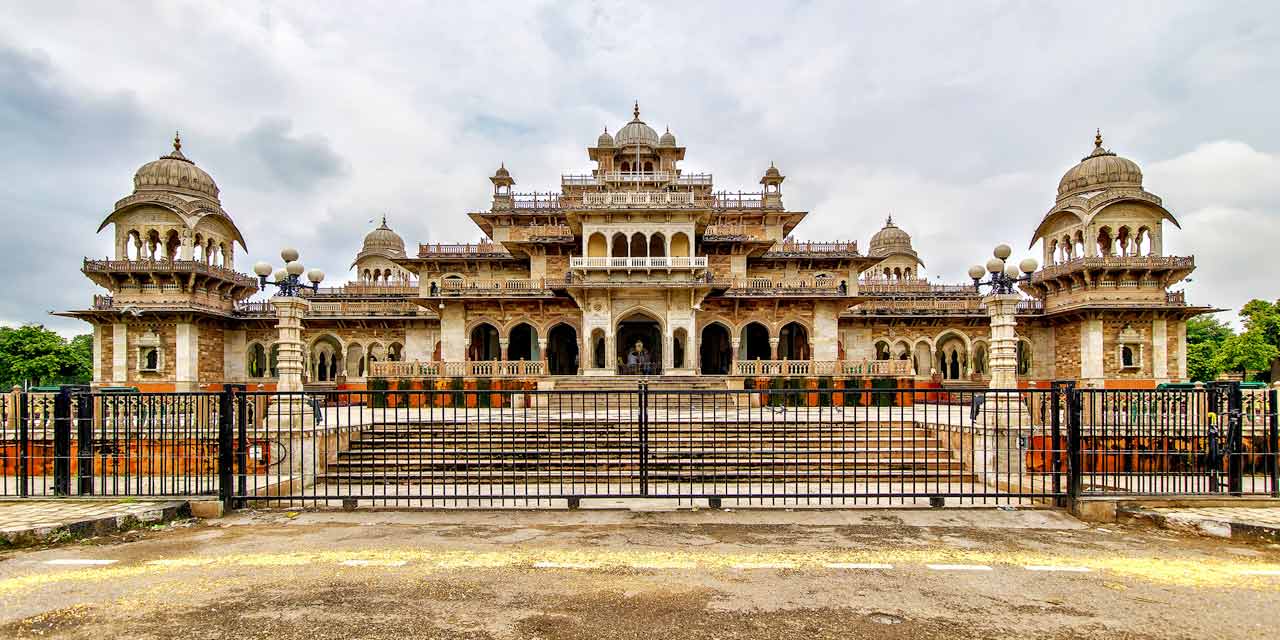
Jaipur’s historical journey and rich heritage can be best explored through its museums. Albert Hall Museum is among the most prominent museums in the city and is renowned for its well-blended architecture. It was built in 1876 as a concert hall and its design had a stark resemblance to the Victoria and Albert Museum of London.
The foundation was laid in 1876 by the Prince of Wales during his Jaipur visit and was converted into a museum by the King of Jaipur, Maharaja Sawai Madho Singh II in 1881. The charming Indo-Saracenic dome structure with intricately engraved arches is built in red sandstone.
You can explore the culture of Rajasthan through the 16 galleries of this museum. Paintings, portraits, carpets, musical instruments, jewelry, ammunition, woodwork, brassware, antique coins, local pottery, handicrafts, and sculptures are on display at the museum. Other attractions worth exploring at the complex are an aviary, a greenhouse, and a zoo.
16. Galtaji Temple
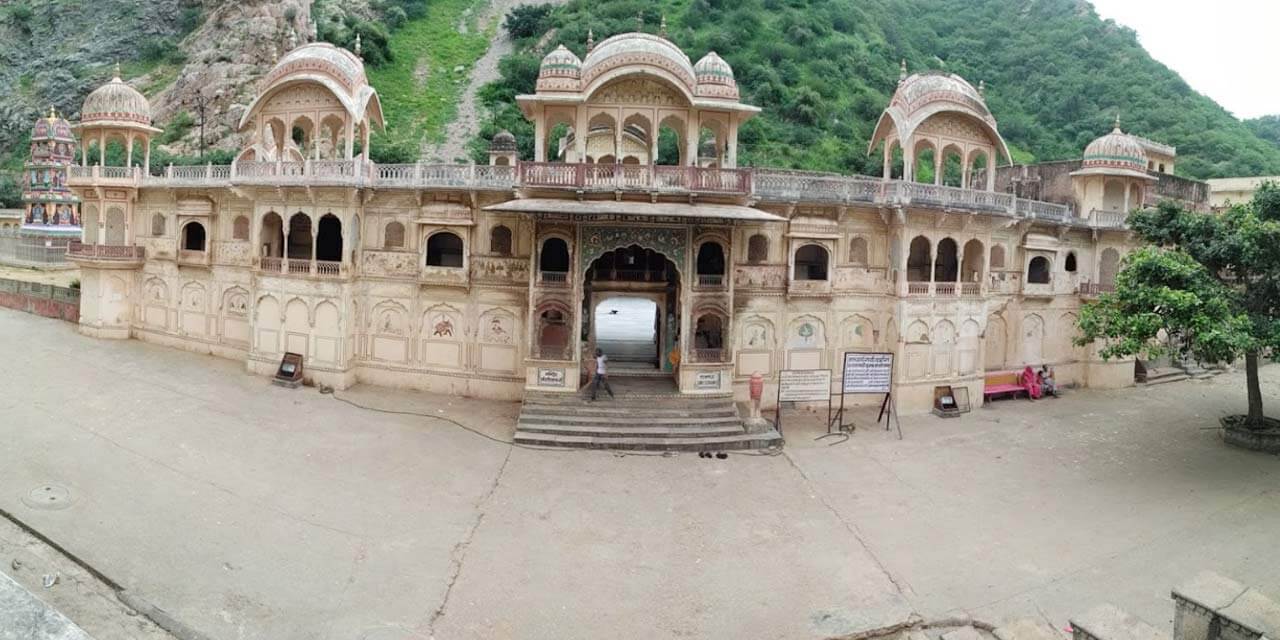
Galtaji Temple is a revered Hindu pilgrimage built by Diwan Rao Kriparam in the 18th century and was dedicated to Saint Galav. Constructed around 10 kilometers away from the city amidst the Aravalli hills in a mystical setup, the temple draws in travelers of all types.
There are several shrines of Hindu gods Lord Rama, Lord Krishna, and Lord Hanuman around the Galtaji Temple. Holy kunds, pavilions, and natural springs add charm to the majestic temple built in pink sandstone and designed as a palace.
Natural freshwater springs from the Aravalli hills supply water to seven holy 'kunds' or water tanks in the temple complex. The 'Galta Kund' is believed to be filled with water throughout the year and considered the holiest of all kunds. Pilgrims take a dip in the reverent water that flows from the 'Gaumukh', a rock shaped like a cow's head, and fills the tanks. The grandeur of the temple in the beautiful natural setting makes it a picture-perfect spot.
17. Swargsuli Tower
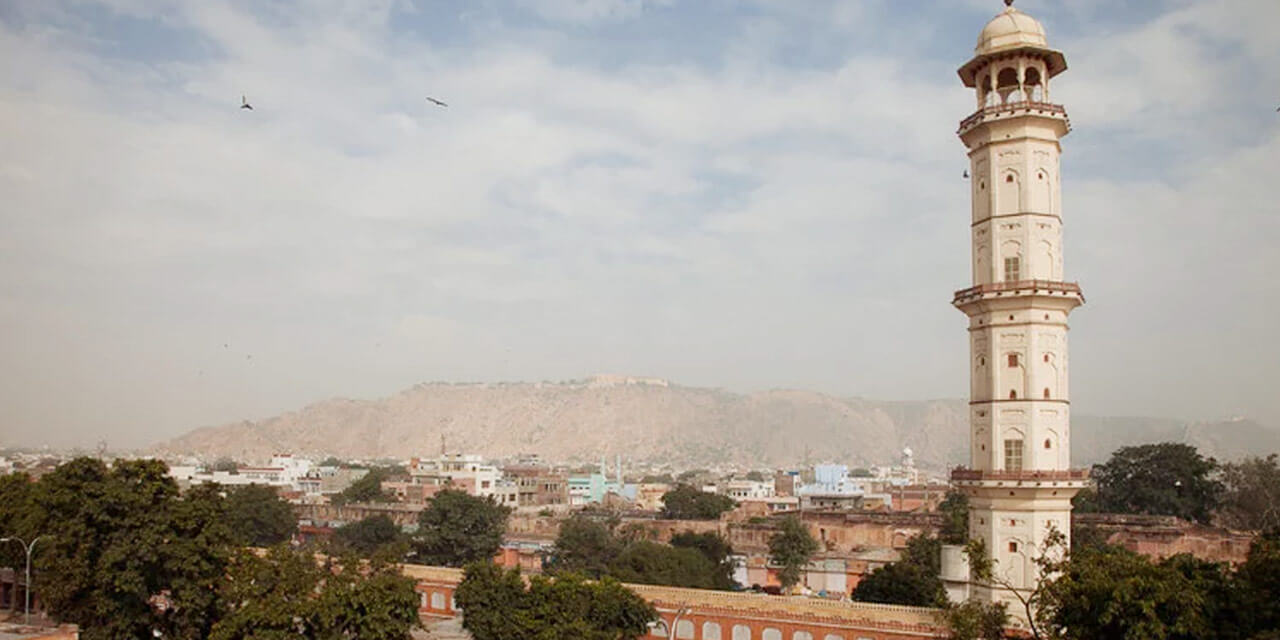
Swargsuli Tower or SargaSuli is the tallest tower of Jaipur, built in 1749 to commemorate the victory of Maharaja Sawai Ishwari Singh at the Battle of Rajmahal. Located at the Aatish market, the 140 feet tower was designed by the royal craftsman Ganesh Khowan drawing in elements from Delhi’s Qutub Minar and Chittorgarh’s Kirti Stambh.
The tower had a contrasting yellow color which made it stand out against the pink color across the city. The seven-storeyed minaret offers breathtaking panoramic views of Jaipur. You can climb up to the top floor through a flight of 264 steps and enjoy the enthralling view of Jaipur city.
18. Jawahar Kala Kendra
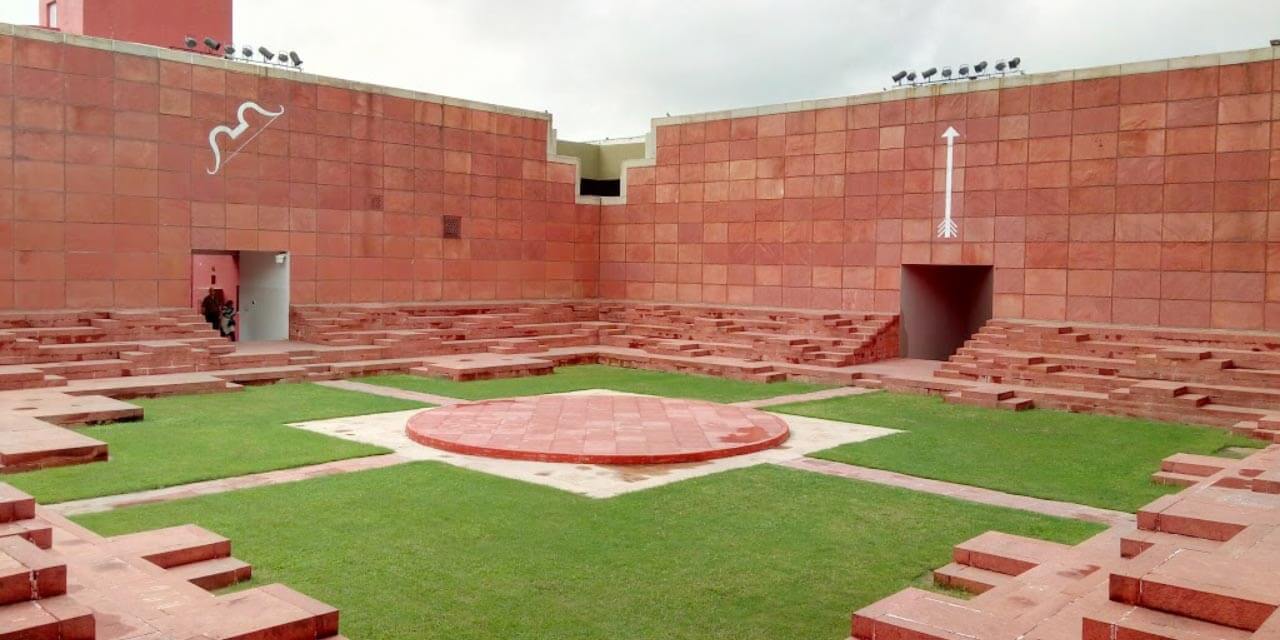
Jawahar Kala Kendra is an arts and crafts center built in the heart of Jaipur. Construction work was initiated in 1986 as per the layout designed by Charles Correa based on the Indian architectural concepts of Vaastu and Shilpa Shastra. Upon completion in 1991 the center was launched by the state government and dedicated to the first Prime Minister of India, Pandit Jawahar Lal Nehru.
Jawahar Kala Kendra preserves Rajasthani culture, traditions, and spiritual values. The red sandstone structure is dedicated to the late prime minister of India, Jawaharlal Nehru. You can visit the library, theatre, galleries, and auditoriums to explore the rich heritage of India.
19. Sheesh Mahal

Sheesh Mahal is located in the Amber Fort complex. It is popularly known as “The Palace of Mirrors” and has been alluring scores of tourists from across the world. Built by Maharaja Man Singh in 1727, the opulent palace has an intricate setting of precious stone and mirror work on its walls and ceilings.
The mirror arrangement is peculiar as it reflects a single ray of light to brighten up the entire room. You can witness the exquisite mirror work and marvel at the expertise of designers and architects in those times.
20. Anokhi Museum of Hand Printing
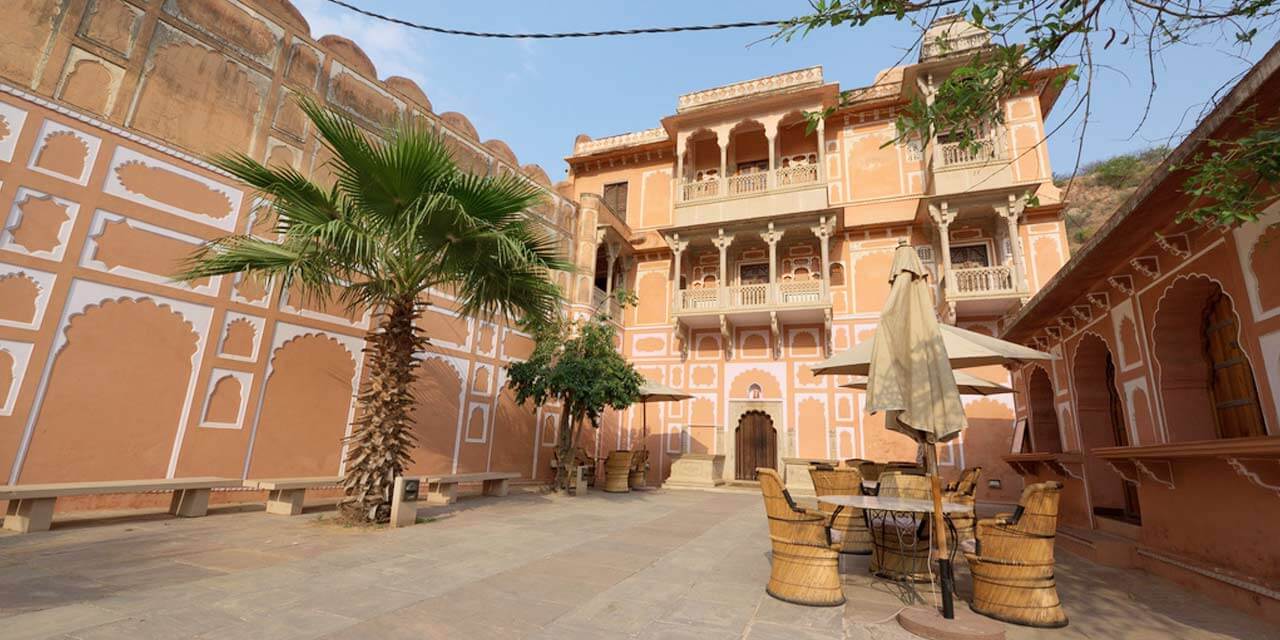
Dedicated to the traditional Rajasthani art of hand-block printing, Anokhi Museum of Hand Printing is a unique museum just a kilometer away from Amber Fort. It was started to preserve the age-old tradition of carving designs on wooden blocks and printing them on fabrics.
The charitable foundation operates from a 400-year-old two-story haveli known as Chanwar Palki Walon ki Haveli, which has been restored to perpetuate the craft of hand printing using natural dyes. The project has been awarded for ‘Cultural Heritage Conservation’ by UNESCO in 2000.
You can have a holistic experience of the old tradition and see the tools and techniques used to create the blocks and fabrics with contemporary designs. Block carving and hand printing workshops are also conducted by the management upon special request. You can buy handcrafted ‘Anokhi’ merchandise such as textiles, home furnishings, jewelry, and cards at the museum souvenir shop.
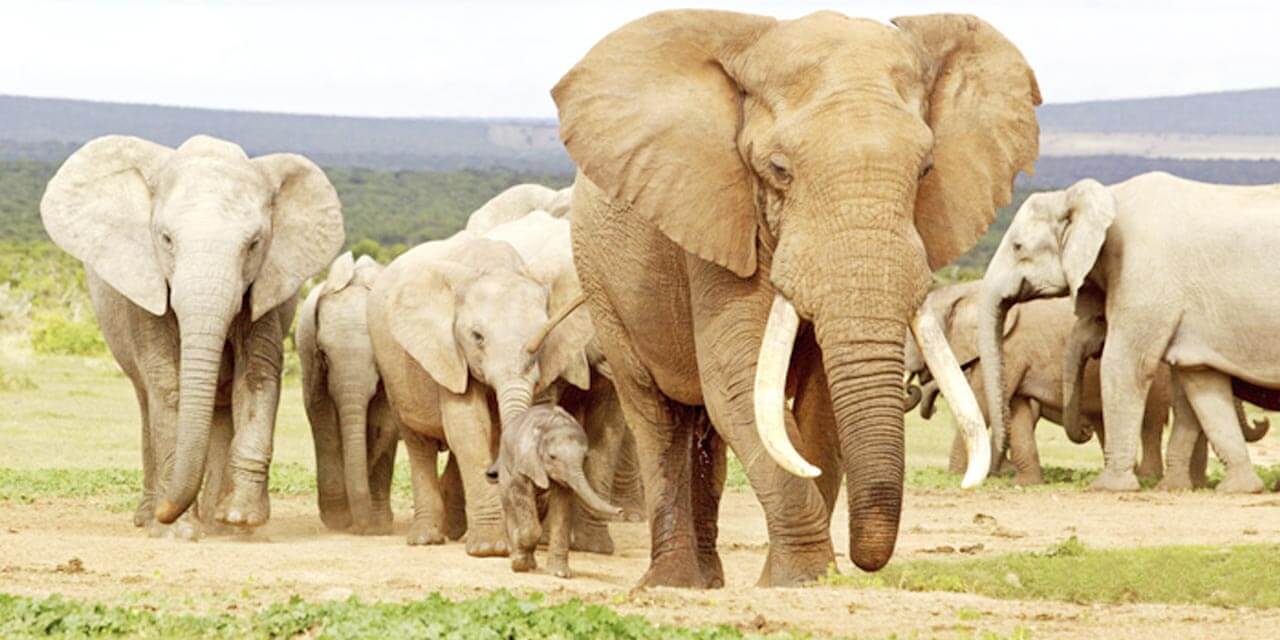
Elefun is an elephant sanctuary dedicated to preserving the species. Started in 2013, the place is run by a family of mahouts (elephant caretakers). The establishment offers natural living conditions to elephants and interesting animal interaction experiences to the visitors.
Some of the elephants at the sanctuary have been rescued from circuses and zoos to provide them with loving and natural living conditions. You can enjoy fun activities such as learning to talk to Elephants, walking with them, feeding, and bathing them. You can also decorate an elephant using natural colors and traditional patterns. Elefun is a great place to visit with family and kids.
22. Khole Ke Hanuman Ji Temple
Constructed by Pandit Radhe Lal Choubey in 1960, Khole Ke Hanuman Ji Temple is a Hindu temple dedicated to Lord Hanuman. Located atop a hillock on the Delhi bypass in Jaipur at Lakshman Dungri, the temple offers panoramic views of the tranquil and green surroundings.
Khole Ke Hanuman Ji temple was built after Pt. Choubey spotted a rock with a carving of Lord Hanuman and started offering prayers at the spot. He built a small temple at the spot which was later expanded to its current size gradually. The shrine is highly revered by the locals and is flocked by devotees on Tuesdays and Saturdays. Dal-Bati Churma and Swamani Prashads are the traditional offerings that are prepared using raw ingredients donated by the devotees.
23. Maharaja Sawai Man Singh II Museum
In 1959 Maharaja Sawai Man Singh II converted a part of the City Palace constructed by Maharaja Sawai Jai Singh II into a museum known as the City Palace Museum. Later, several other sections of the palace were added to the museum, and it came to be known as Maharaja Sawai Man Singh II Museum.
It has five gallery sections- Textile gallery, Sarvatobhadra, Sabha Niwas, Sileh Khana, and the Painting & Photography gallery. Royal costumes, artifacts, and furnishings from the last three centuries are on display at the Museum. A walk through the galleries of the museum will satiate your curiosity about the regal life of the rulers of Jaipur and the rich heritage of Rajputana.
The exhibits also include traditional paintings and portraits of the royal family. The arms and armor collection of the warrior clan includes arrows, axes, shields, spears, daggers, and guns. You can buy souvenirs at the museum shop called the Palace Atelier and taste royal delicacies at the Baradari restaurant at the City Palace Complex.
24. Johari Bazaar
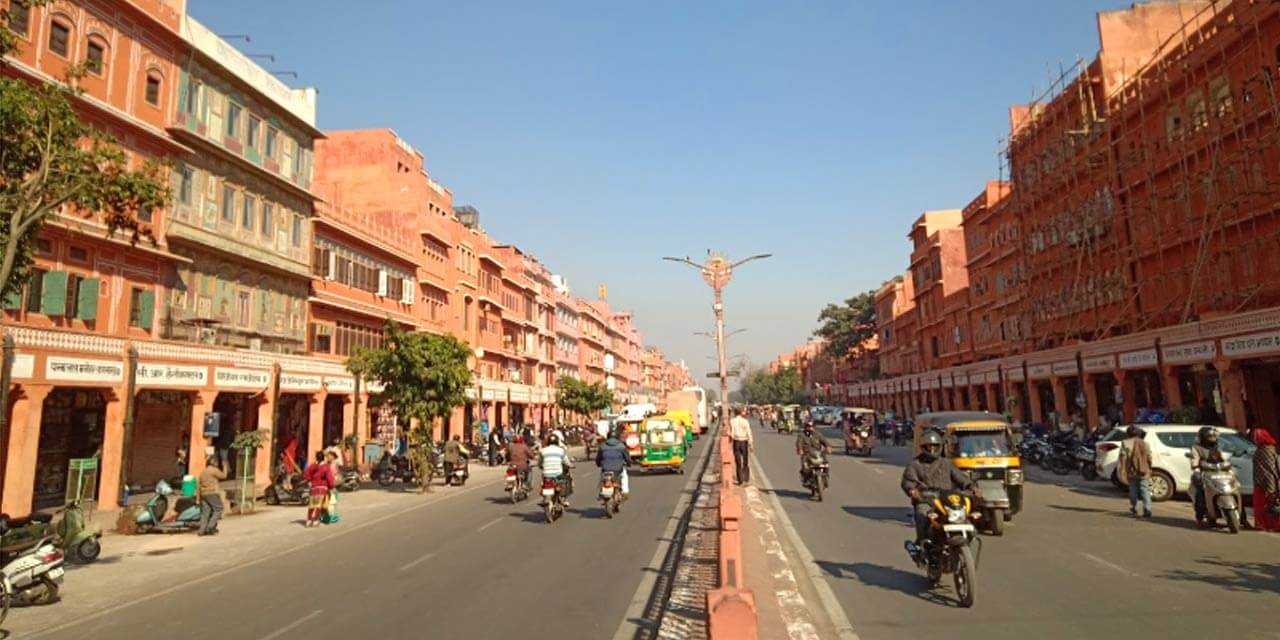
Jaipur is the business hub of Rajasthan, famous for its handicrafts and indigenous products. Johari Bazaar is the oldest and most colorful market in Jaipur, located near Hawa Mahal. It is a shopper’s paradise offering vibrant handmade products, scrumptious local food, and premium quality Kundan jewelry.
You can buy authentic Jaipuri jewelry made in gold, silver studded with diamonds, emeralds, and rubies. The narrow lanes of the market are loaded with colorful traditional apparel, embroidered juttis, and opalescent lehengas.
The small stalls sell everything including famous Jaipuri textiles, traditional blue pottery, cotton quilts, and home décor products. Make sure to bargain well as prices are often swelled up for tourists.
25. Bapu Bazaar
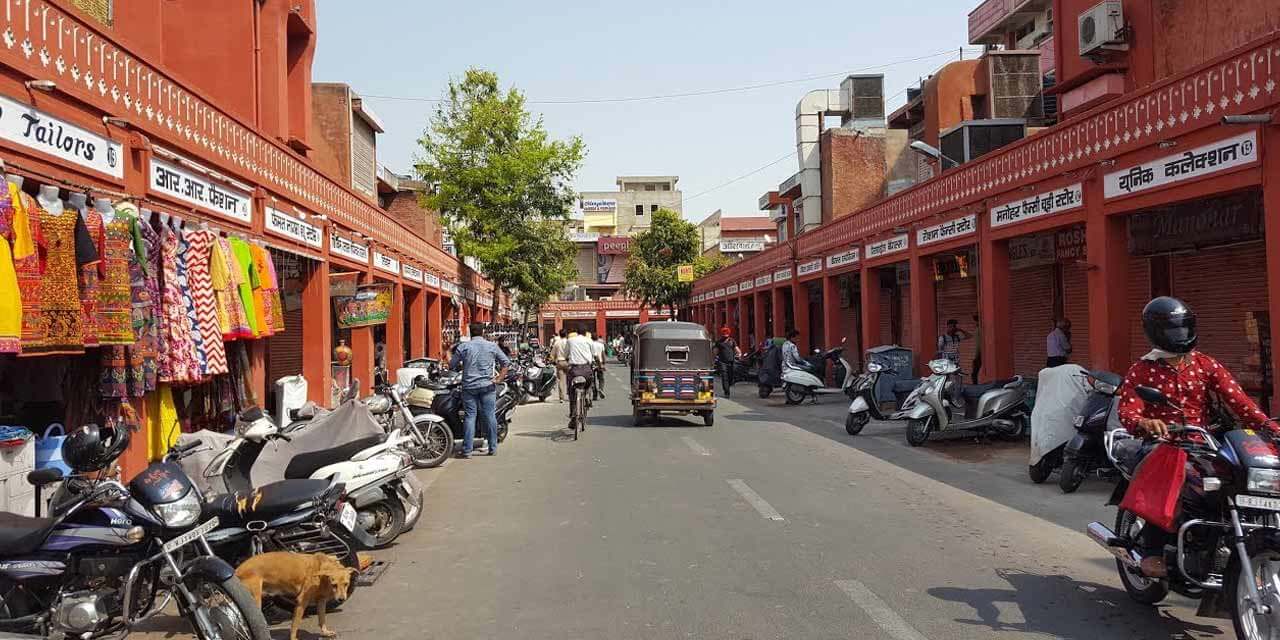
Bapu Bazaar is located between the Sanganer Gate and the New Gate of Jaipur. It is one of the most famous markets in Pink city and the best place to buy anything Rajasthani. The exuberant market attracts shoppers from all over the world.
You can buy authentic mojari footwear made of camel hide, lac bangles, bandhani dupattas, leheriya sarees, potli bags, colorful puppets, ethnic jewelry, fine cotton quilts, and handwoven textiles at reasonable prices. You can also pick up beautiful showpieces, artifacts, baubles, pen stands, keychains with mirror work as souvenirs and gifts for your loved ones.
Don’t forget to binge on local snacks and authentic dishes such as chat, samosas, dal-baati-churma, masala tea, and pyaaz kachori. Falooda kulfi is a must-have specialty at Bapu bazaar, it is yummy and keeps you cool as you shop.
- Search Please fill out this field.
- Newsletters
- Destinations
- More to Explore
- Things To Do
10 Best Tourist Places to Visit in Bengaluru
:max_bytes(150000):strip_icc():format(webp)/10947453_10153084623948270_8191342691038933499_o-591d1e8d3df78cf5fa731909.jpg)
Pierre Ogeron/Getty Images
Bengaluru, formerly Bangalore , is the capital city of Karnataka in south India. The city has earned several names such as Silicon Valley of India, Pub Capital of India, Air Conditioned City, and City of Gardens. However, prior to the IT revolution, Bengaluru was known as Pensioners' Paradise.
Now, it's a wonderful blend of past and present. Although Bengaluru may not have as many iconic attractions as other major cities in India, it does have a great mix of history, architecture, culture, spirituality, and nature.
Bangalore Palace
jayk7/Getty Images
Built for Chamaraja Wadiyar X in 1887, the design of Bangalore Palace was inspired by England's Windsor Castle . As a result, this evocative palace has Tudor-style architecture with fortified towers, arches, green lawns, and elegant woodcarvings in its interiors.
The royal family still lives here today, and the palace is open to the public from 10 a.m. to 5:30 p.m. on weekdays.
National Gallery of Modern Art
Nicolas Mirguet/Flickr/CC BY-NC 2.0
If you're an art lover, don't miss visiting the National Gallery of Modern Art on Palace Road. This gallery, which opened in 2009, is the third of its kind in India (the others are in Delhi and Mumbai).
It's housed in a Colonial mansion with a garden setting and has two interconnected wings, one of which features works from the early 18th century up until India's Independence while the other displays work from a large number of modern and contemporary artists.
The gallery is open Tuesday through Friday from 11 a.m until 6:30 p.m. and on Saturday and Sunday from 11 a.m. until 8:00 p.m. It's closed on Monday. There is a cafe on the premises as well, which is open fewer hours than the gallery itself.
Tipu Sultan's Palace and Fort
John Hoey/Flickr/CC BY 2.0
Situated inside the Bangalore Fort area, Tipu Sultan's Palace was originally built by Kempe Gowda using mud. Later, Hyder Ali started reconstruction in Indo-Islamic architecture. This was completed by his son, Tipu Sultan, in 1791.
The Hindu temple seen in the courtyard of the fort is the proof of Tipu Sultan's religious tolerance. The palace is open daily from 8.30 a.m. until 5.30 p.m. daily. Combine visiting it with nearby Krishna Rajendra Market.
Krishna Rajendra (KR) Market
TripSavvy / Ivey Redding
This vivid, traditional local market is an assault on the senses and a treat for photographers, and in the middle of it, you'll find Bengaluru's bustling flower market. The market also sells a variety of fresh produce, spices, and copper items.
Go there in the early morning to best experience the colors and crowds, when piles of fresh stock are being unloaded and sold.
Lalbagh Botanical Garden
John Hicks/Getty Images
This expansive garden started out as a private Mughal-style garden for the city's royal rulers. It was established in 1760 by Hyder Ali and later extended by his son Tipu Sultan.
It now covers 240 acres and derives its name from the red roses that bloom throughout the year there. The garden is said to have the most diverse species of plants in the world. Its focal point is a majestic glasshouse, built in 1889 to commemorate the visit of the Prince of Wales. It was designed along the lines of the Crystal Palace in London.
The garden is open daily from 6.00 a.m. to 7.00 p.m. throughout the year. It takes on a festive look during India's Independence Day and Republic Day celebrations, with a captivating show of over 200 varieties of flowers. The show also features an exhibition of hybrid vegetables.
Cubbon Park
Saurav Pandey Photography/Getty Images
Occupying a 300-acre area in Bangalore's business district, Cubbon Park is a popular place for walkers, joggers, nature lovers, and anyone who just wants to laze around. The park was named after the erstwhile Commissioner of Mysore, Sir Mark Cubbon. Many ornamental and flowering trees, both exotic and indigenous, can be found there. Kids will enjoy the special Bal Bhavan play area and aquarium inside the park.
Vidhana Soudha
Photo by James Adaickalasamy/Getty Images
First opened in 1956, Vidana Soudha is a landmark of Bengaluru and is located next to Cubbon Park. This enormous building is a massive example of neo-Dravidian architecture, complete with four domes on its four corners. It houses the Legislative Chamber of Karnataka Government and accommodates many other government departments. Unfortunately, it's not open to the public but is stunningly illuminated at night.
Attara Kacheri (High Court) and Surroundings
Frederic Soltan/Getty Images
This eye-catching red, two-storied building, built in 1867 under the reign of Tipu Sultan, has magnificent neoclassical architecture. It houses the High Court and many lower courts, and sits opposite Vidana Soudha at the entrance to Cubbon Park.
Close to the Court is the red, Gothic-style State Central Library building, with imposing stone and fluted pillars. Nearby, the highlight at the Government Museum is a collection of artifacts and stone carvings dating back to the 12th century, and excavated from places including Hampi . Adjacent to the Museum is Venkatappa Art Gallery, devoted to displaying famous paintings, plaster of Paris works and wooden sculptures of renowned artist Venkatappa (who painted for the royal family). Tickets for the museum also provide entry to the art gallery.
Ulsoor Lake
CamBuff/Getty Images
Picturesque Ulsoor Lake is spread over an area of 125 acres in the heart of the city, north of M.G. Road. It was constructed by Kempe Gowda II. It's open daily, except Wednesdays, from 6 a.m. until 8 p.m. Boating facilities are provided by the Karnataka State Tourism Development Corporation. There's also a walking track around the lake.
Spiritual and Religious Places
Richard I'Anson/Getty Images
Bengaluru is the home of many of India's spiritual gurus, and the city has a rich religious culture. There are many diverse places of worship, including ashrams, mosques, and churches.
Consider seeing many of the city's attractions on a Bengaluru walking tour. Alternatively, Viator in conjunction with Tripadvisor offers a comprehensive Private Full Day Bangalore (Bengaluru) City Tour and Experiential Culture Tour of Bangalore (Bengaluru) , bookable online.
It's also worth exploring the area around Bengaluru. There are many places of interest, whether you're after an escape from city life or are a visitor who wants to spend a day enjoying the abundant beauty of Mother Nature.
Related Articles
More related articles.
Places To Visit In Gwalior
Top hotel collections.

Near City Centre
Cheap Hotels
- Filter (34)
- Shopping (6)
- Forts & Palaces (4)

1. Gwalior Fort

2 km from city center 1 out of 34 Places To Visit in Gwalior
Perched high at the top of a vast rocky massif, Gwalior Fort is a place hard to miss being visible from every nook and corner of the city. Regarded as one of most impregnable fortress of north and central India, the place is a must visit.
2. Jai Vilas Palace

2 km from city center 2 out of 34 Places To Visit in Gwalior
The Jai Vilas Palace also known as the Jai Vilas Mahal, is a nineteenth-century palace placed in Gwalior Madhya Pradesh, India. It was established in 1874 by Jayajirao Scindia, the Maharaja of Gwalior and is still the residence of his descendants, the former royal Maratha Scindia dynasty.
3. Gujari Mahal (State Archaeological Museum)

2 km from city center 3 out of 34 Places To Visit in Gwalior
Built by Man Singh in the 15th century for his favorite wife Mrignayani, Gujari Mahal is now in ruins and also an archaeological museum as it showcases various sculptures, statues and other remains dating back to 1st and 2nd century BC.
4. Man Mandir Palace

2 km from city center 4 out of 34 Places To Visit in Gwalior
Located at the North-east end of the fort, Man mandir palace was built between 1486 and 1516 by the Tomar ruler, Man Singh Tomar. The palace couldn't survive with time, however the remains of the palace still showcases the beautiful carvings and designs of that era.
Top Hotels In Gwalior
₽ 1,779 onwards
₽ 719 onwards
₽ 468 onwards
₽ 776 onwards
5. Tomb of Tansen

2 km from city center 5 out of 34 Places To Visit in Gwalior
One of the greatest musicians of India and en eminent vocalist in the courts of Akbar in the medieval period, Tansen was also among one of the nine gems of the Mughal court.
6. Teli Ka Mandir

2 km from city center 6 out of 34 Places To Visit in Gwalior
Located in the Gwalior Fort, this temple also dates back to the 9th century and is the highest building in Gwalior (100 ft.). This temple was used to process oil before the Britishers occupied the Gwalior Fort.
7. Saas Bahu Temple

1 km from city center 7 out of 34 Places To Visit in Gwalior
Built in the 9th century, the Saas Bahu temple attracts tourists and devotees alike. Contrary to what the name suggests, the Saas Bahu Temple does not mean Saas( mother-in-law) and bahu(daughter-in-law) but is rather a short form of Shastra Bahu, another name of Lord Vishnu.
8. Scindia Museum

2 km from city center 8 out of 34 Places To Visit in Gwalior
Dedicated to Jivaji Rao Scindia, this is one of the most prominent museums of Madhya Pradesh. It occupies around 35 rooms of Jai Villas Palace and was established in the year 1964.
9. Tomb of Ghaus Mohammed

2 km from city center 9 out of 34 Places To Visit in Gwalior
The tomb of a 16th century prince-turned-sufi is now situated in the town of Hazira. This mausoleum exhibits astonishing Mughal architecture and has proven to be a famous pilgrimage for hindus and muslims alike.
10. Gwalior Zoo

2 km from city center 10 out of 34 Places To Visit in Gwalior
Families and Wildlife enthusiasts can visit the Gwalior zoo which has a good collection of animals including a white tiger. The zoo is a part of a huge garden known as Phool Bagh which was built by Madhao Rao Scindia and inaugurated by Prince of Wales in 1922.
11. Sun Temple, Gwalior

4 km from city center 11 out of 34 Places To Visit in Gwalior
Surya Mandir or Sun Temple located near Residency at Morar is one of the important religious centers in the historic city of Gwalior. Although not constructed long ago, it is among the most revered shrines in the ancient city.
12. Padavali and Bateshwar

23 km from city center 12 out of 34 Places To Visit in Gwalior
Situated around 40 km from the main town of Gwalior, Padavali is an fortress comprising many ancient temples. The temples have intricate carvings and one of the temples also have erotic carvings and hence famous as mini Khajuraho.
Discover More About Sightseeing & Tourist Attractions in Gwalior

Best Water Parks in Gwalior for a Fun-filled Day

Food & Drink
Best Malls in Gwalior For Shopping, Food & Entertainment!

Sightseeing
Things to Do in Gwalior for a Memorable Holiday

Places Near
Places to Visit Near Gwalior

Hill Stations
Hill Stations Near Gwalior for a Quick Getaway
13. Suraj Kund

2 km from city center 13 out of 34 Places To Visit in Gwalior
Suraj kund in Gwalior is a tank located in Gwalior fort. It is believed to have magical powers. Water from the tank act as a medicinal water that cures chronic diseases. Surroundings of the Suraj Kund are quite attractive and well maintained which encourage the tourist to spend plenty of time.
14. Gwalior Trade Fair

14 out of 34 Places To Visit in Gwalior
One of the largest fairs of Madhya Pradesh, this trade fair was started in 1905 by Maharaj Madhav Rao Scindia, the king of Gwalior. Spread over an area of 104 acres, the fair is held at the Mela Ground at the Race Course Road.
15. Tighra Dam

18 km from city center 15 out of 34 Places To Visit in Gwalior
Tighra dam is located just outside the main city and provides a nice getaway from the city.
16. Shyam Vatika

3 km from city center 16 out of 34 Places To Visit in Gwalior
Recognized by the Guinness as World's largest indoor mural, this is a privately owned banquet hall with all its ceilings and interior walls painted by a team of 6 artists led by Ashutosh Panigrahi.
17. Sarod Ghar (Kala Vithika)

4 km from city center 17 out of 34 Places To Visit in Gwalior
Music enthusiasts must visit the Sarod Ghar, which is a museum of music and has been set up in the ancestral house of the legendary Ustad Hafiz Ali Khan.
18. Boating at Tighara Dam

18 km from city center 18 out of 34 Places To Visit in Gwalior
Tighara dam is located just outside the main city and provides a nice getaway from the city.
19. Shopping in Gwalior

4 km from city center 19 out of 34 Places To Visit in Gwalior
The best time to buy handicrafts in Gwalior is during the Annual Trade Fair held during the month of January where artisans from various parts of the country come to showcase their work. This city also has one of the biggest cloth markets in the country and known for it's unique Chanderi sarees.
20. City Mall

2 km from city center 20 out of 34 Places To Visit in Gwalior
Centrally located on Maharani Laxmi Bai Road, Gwalior, the Dindayal City Mall is for that group of people who absolutely love high-end luxury malls. The mall symbolizes the city's progress, where one can find a plethora of international brands.
21. Roop Singh Stadium

1 km from city center 21 out of 34 Places To Visit in Gwalior
Roop Singh Stadium is a famous International cricket stadium which has hosted many international cricket matches. It was here where the first double century in the history of ODI cricket was scored by Indian batting legend Sachin Tendulkar in a match against South Africa.
22. Mrignayani Emporium

3 km from city center 22 out of 34 Places To Visit in Gwalior
A good place to buy handicrafts and clothes including famous Chanderi and Maheshwari Saris, Mrignayani Emporium is named after the Queen Mrignayani and is a chain outlet owned by the government.
23. Jiyaji Chowk Bazaar

4 km from city center 23 out of 34 Places To Visit in Gwalior
If you are looking for handicrafts, handloom products and jewellery, this is the perfect place to go.
24. Patankar Bazaar

3 km from city center 24 out of 34 Places To Visit in Gwalior
Another crowded market in Gwalior, you will find all kinds of handicrafts, handloom products, stone carvings, artifacts, etc.
25. Arihant Emporium

2 km from city center 25 out of 34 Places To Visit in Gwalior
Famous for selling Gwalior style silver boxes decorated with images from the tile work of Man Mandir Palace, this shop is located near Jai Vilas Palace.
26. Gurudwara Data Bandi Chhod

2 km from city center 26 out of 34 Places To Visit in Gwalior
Gurudwara Data Bandi Chhod is associated with Guru Har Gobind Saheb, his imprisonment in the Gwalior Fort and his release along with the 52 kings who were held captive. The Gurudwara has immense religious importance and is visited by the followers to pay homage to the great man.
27. Usha Kiran Palace Hotel

2 km from city center 27 out of 34 Places To Visit in Gwalior
Constructed in 1880 by the Scindia rulers, Usha Kiran Palace Hotel is a heritage hotel in Gwalior. The property now belongs to the Taj group of hotels in India and occupies over 9 acres of land. The stunning traditional architecture and the regal decor still maintain the aesthetic appeal of the palace. The hotel has a multi-cuisine restaurant and provides all the facilities to make their guests feel like royalty.
28. Gopachal Parvat

2 km from city center 28 out of 34 Places To Visit in Gwalior
Gopachal Parvat is a famous for the 7th and 15th century rock-cut Jain monuments. The monuments are dedicated to Jain Teerthankaras - Adinatha, Mahavir, Neminatha and Rishanabhanatha - whose idols can be seen in a meditative posture. They are a part of 100 monuments located in and around the city.
29. Samadhi Of Rani Lakshmi Bai

0 km from city center 29 out of 34 Places To Visit in Gwalior
Built in the honour of the Warrior Queen of Jhansi, Rani Lakshmi Bai, her Samadhi is a famous attraction. Other than the Samadhi, the attraction has a stunning 8 metre tall metal statue of Rani Lakshmi Bai. A fair is conducted every year in June at the location in the honour of the Queen. It is a perfect attraction for history buffs.
30. Kuno National Park

0 km from city center 30 out of 34 Places To Visit in Gwalior
Kuno-Palpur Wildlife Sanctuary is a hidden gem hiding amidst Vindhyan Hills in the state of Madhya Pradesh. This wildlife sanctuary is a well kept secret and is a safe haven for a large number of flora and fauna. The tranquil wilderness and the serene rivers makes this place look magical. The dense lush green trees hid many treasures amidst them that will surely beckon you to explore.
31. Chhatris Of Scindia Dynasty

0 km from city center 31 out of 34 Places To Visit in Gwalior
Chhatris of Scindia Dynasty are the memorials built in the memory and honour of the rulers of the Scindia Dynasty. The first one was constructed in the memory of Jayaji Rao Scindia in 1817 CE. The attraction is famous for its architectural beauty. The elegant domes and the beautiful pavilions made of pink and yellow sandstone amidst the lush green lawns is a must-see for tourists.
32. Splash The Sun City

3 km from city center 32 out of 34 Places To Visit in Gwalior
Situated in Gole ka Mandir in Gwalior, Splash The Sun City is one of the most popular water parks in the city and is a perfect way to spend time with friends and family. With a number of water rides, slides and roller coasters, the park is equally popular among kids and adults alike.
33. Old Water Park

4 km from city center 33 out of 34 Places To Visit in Gwalior
Located on the Hurawali Link Road in Gwalior, Old World Water Park is a top water park of the city. It is a popular hangout place among the adults and kids alike, with a plethora of rides and slides ideal for age groups.
34. Tansen Music Festival

34 out of 34 Places To Visit in Gwalior
Set in the humble village of Behat in Gwalior, the Tansen Music Festival or the Tansen Sangeet Sammelan/ Tansen Utsav is an alluring display of the art of music.
Places To Visit In Nearby Places

FAQs on Gwalior
What are the top shopping places in gwalior, what are the top sightseeing places in gwalior, what are the top restaurants in gwalior, how can i commute within gwalior, can you suggest an itinerary for gwalior, browse hotel collections, by hotel type.
Best Resorts In Gwalior
Villas In Gwalior
Lodges In Gwalior
By Budget Category
Cheap Hotels In Gwalior
Hotels In Gwalior Near Railway Station
Best Luxury Hotels In Gwalior
By Star Category
3 Star Hotels In Gwalior
With Specific Facilities
Hotels In Gwalior City Centre
OYO Hotels In Gwalior
Pet-Friendly Hotels In Gwalior
Near Landmarks
Hotels Near Gwalior Fort
Similar Places

Filter ( 0 selected)
Get the best offers on travel packages.
Compare package quotes from top travel agents
Compare upto 3 quotes for free
- India (+91)
*Final prices will be shared by our partner agents based on your requirements.
Log in to your account
Welcome to holidify.
Forget Password?
Share this page

IMAGES
VIDEO
COMMENTS
Valliyur is a town in Tirunelveli district of Tamil Nadu, India, known for its temples, monuments, and wildlife. Find out the best places to see, stay, and eat in Valliyur with Tripadvisor reviews and ratings.
Valliyoor is a town in Tirunelveli district famous for its cave temple of Lord Muruga, also called Vallioor. The temple has a rich history, scenic beauty and 13th century stone carvings. Learn more about its legends, festivals and how to reach it.
Valliyur is a town in Tirunelveli district, Tamil Nadu, with a population of 29,417 in 2011. It is well connected by road and rail network, and has a literacy rate of 91.09%.
Tirunelveli is a city in Tamil Nadu, India, with many temples, waterfalls, and wildlife attractions. Find out the best places to visit in Tirunelveli, such as Kalakkadu Wildlife Sanctuary, Papanasam Temple, Courtallam Falls, and more.
Explore the best places to visit in Tirunelveli, a district in Tamil Nadu, India. Find out the top religious sites, waterfalls, dams, wildlife areas and more with traveller ratings and photos.
Things to do in Vallioor: Discover the top tourist attractions in Vallioor for your next trip. From must-see landmarks to off-the-beaten-path gems. Plan your visit to with our handy list and make the most of your time in this exciting destination.
Valliyur is a village in Tamil Nadu where Lord Muruga married Valli and stayed with her. The temple has a rock-cut sanctum, a tank and a diamond studded Vel. Learn more about the legends, festivals and how to reach Valliyur.
Vallioor Tourism, India: Get yourself acquainted with Vallioor and demographics of Vallioor, culture, people in Vallioor, currency, best attractions and more with this free travel guide. Use this information to plan your trip to Vallioor ... Popular Hotels in Vallioor. JAYA BHARATHI LODGE 2 Reviews. 6.5 Pleasant Check Availability.
Uncover Vallioor's best with our Travel Guide for 2024. Expert tips & must see recommendations. Whether a tourist or local, plan your holiday today with this tourist guide!
Compare and book hotels in Valliyur, a town near Kanyakumari in Tamil Nadu, India. Find the best deals, ratings, and amenities for your stay in Valliyur.
Explore the best tourist places in Chittoor, Andhra Pradesh, including temples, waterfalls, hills and wildlife sanctuaries. Find out the distance, ratings, reviews and tips for each attraction and plan your trip to Chittoor.
Valliyur is a town in Tamil Nadu, India, with religious sites, monuments, and wildlife areas. Find out what to see, where to stay, and what to eat in Valliyur with Tripadvisor reviews and tips.
Vallioor Weather in July: The air is slightly humid with average humidity being 71% and the average temperature is 84℉. The weather is perfectly balmy making it a great time to visit Vallioor. The maximum temperature recorded in this month is 97℉. An ideal season to visit Vallioor. The average precipitation recorded around this time is 6.22 mm.
Hotel Lance International. Asaripallam Road, Nagercoil. Stay at this 3-star hotel in Nagercoil. Enjoy free breakfast, free WiFi, and free parking. Popular attraction Nagaraja Temple is located nearby. 7.6/10 Good! (9 reviews) "Lobby staff, security, and room service staff were cordial and took prompt care of our needs.
Discover the best places to visit in India, from the Taj Mahal to the Golden Temple, from Varanasi to Jaisalmer. Explore the rich heritage, culture, and nature of this vibrant and diverse country with our guide to the top tourist attractions in India.
Explore the best tourist attractions in Vellore, a city in Tamil Nadu, India. Discover the history, culture and nature of Vellore Fort, St. John's Church, Sripuram Golden Temple, Periyar Park and more.
I recently returned from exploring the country of Malta and I want to share with you my favorite places & experiences. Enjoy this travel guide featuring Malt...
Explore the rich culture and heritage of Jaipur, the 'Pink City of India', with its stunning forts, palaces, temples, and bazaars. Discover the best attractions, such as Amber Fort, Jaigarh Fort, Nahargarh Fort, Jantar Mantar, and City Palace, and enjoy the Rajasthani hospitality and cuisine.
Bengaluru, formerly Bangalore, is the capital city of Karnataka in south India. Discover its history, culture, nature, and art at attractions such as Bangalore Palace, National Gallery of Modern Art, Tipu Sultan's Palace, and Lalbagh Botanical Garden.
These rankings are informed by Tripadvisor data—we consider traveler reviews, ratings, number of page views, and user location. 1. Arboretum Park. 2,984. Gardens. The largest subtropical park in Russia contains more than 30 acres of stunning natural beauty. 2. Sochi Park. 3,038.
Explore 34 tourist places in Gwalior, Madhya Pradesh, India, including forts, palaces, temples, museums and more. Find out the ratings, distances, attractions and photos of each place.
Top Attractions in Krasnodar Krai. See all. These rankings are informed by Tripadvisor data—we consider traveler reviews, ratings, number of page views, and user location. 1. Arboretum Park. 2,984. Gardens. The largest subtropical park in Russia contains more than 30 acres of stunning natural beauty. 2.
These rankings are informed by Tripadvisor data—we consider traveller reviews, ratings, number of page views, and user location. 1. Arboretum Park. 2,984. Gardens. The largest subtropical park in Russia contains more than 30 acres of stunning natural beauty. 2. Sochi Park. 3,038.